
- Introduction
- Purpose & Action plan
- Dedication
- Source of inspiration
- Reintroduction of Syriac chants
- Future plans
- Field Work
- Pleasant surprises from field work
- Interviews & Performances
- Interviews & Performances: Quick List
- Special thanks & Acknowledgemnts
- Please donate
- Songs: Complete List
- Resources
- Personalities & Institutions
- Speeches/Press reports
- User reviews & comments
- Photo gallery
- Copyright
THE ARAMAIC PROJECT Part I SYRO MALABAR CHURCH JESUS & INDIA A CONNECTION THROUGH ARAMAIC LANGUAGE AND MUSIC By A program to honor, cherish, and preserve the unparalleled legacy of an ancient language and music tradition that are part of the history of India, and an intangible treasure in the world’s cultural heritage . |
AP Interviews and Performances Videos - Index
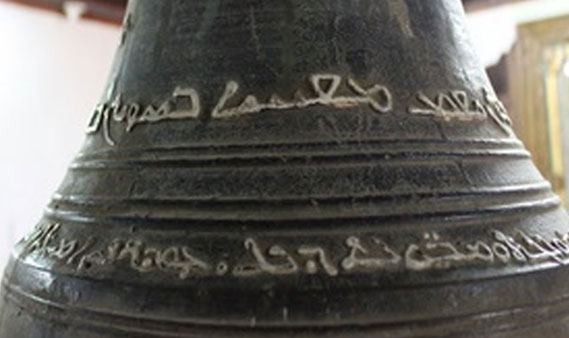 Church bell at Martha Mariam (Lady Mary) Church at Kuravilangad, Kerala, with two rows of inscriptions in Syriac (Aramaic)
Church bell at Martha Mariam (Lady Mary) Church at Kuravilangad, Kerala, with two rows of inscriptions in Syriac (Aramaic)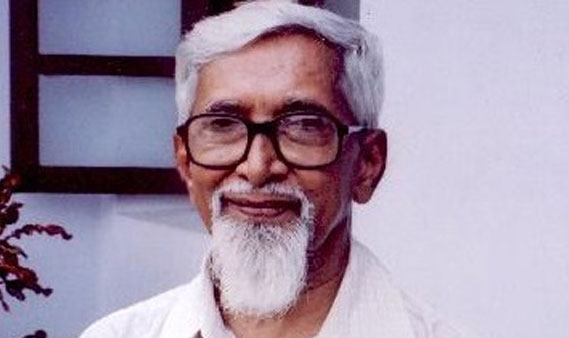 Fr. Emmanuel Thelly, C. M. I., Syriac scholar and lexicographer
Fr. Emmanuel Thelly, C. M. I., Syriac scholar and lexicographer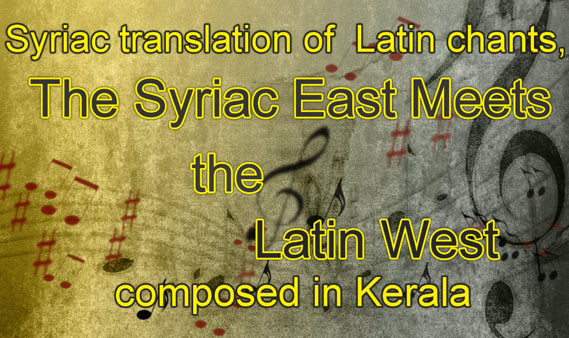 The Syriac East Meets the Latin West in Kerala, India
The Syriac East Meets the Latin West in Kerala, India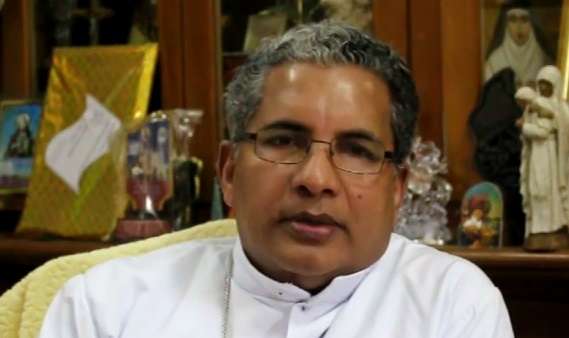 . Bishop Joseph Kallarangatt, the only bishop in India who celebrates solemn Qurbana in Syriac.
. Bishop Joseph Kallarangatt, the only bishop in India who celebrates solemn Qurbana in Syriac. Koonammakkal Thoma Kathanar, Syriac scholar and founder of the Beth Aprem Nazrani Dayra.
Koonammakkal Thoma Kathanar, Syriac scholar and founder of the Beth Aprem Nazrani Dayra. Fr. Sebastian Sankoorikkal in conversation with Dr. Joseph J. Palackal
Fr. Sebastian Sankoorikkal in conversation with Dr. Joseph J. Palackal . Dr. Varghese Pathikulangara in conversation with Dr. Joseph J. Palackal
. Dr. Varghese Pathikulangara in conversation with Dr. Joseph J. Palackal Dr. Joseph J. Palackal teaches the Syriac chant "Bar Maryam" at the conference on Christian Congregational Music. Ripon College, Cuddesdon, Oxford, United Kingdom.
Dr. Joseph J. Palackal teaches the Syriac chant "Bar Maryam" at the conference on Christian Congregational Music. Ripon College, Cuddesdon, Oxford, United Kingdom. Image at the Shrine dedicated to Palackal Thoma Malpan at his birthplace. Courtesy: Shiji Photos, Ottappunna.
Image at the Shrine dedicated to Palackal Thoma Malpan at his birthplace. Courtesy: Shiji Photos, Ottappunna. Cenotaph for the Malpan at the Monastery of St. Joseph, Mannanam, beside the tombs of FF. Porukara and Chavara
Cenotaph for the Malpan at the Monastery of St. Joseph, Mannanam, beside the tombs of FF. Porukara and Chavara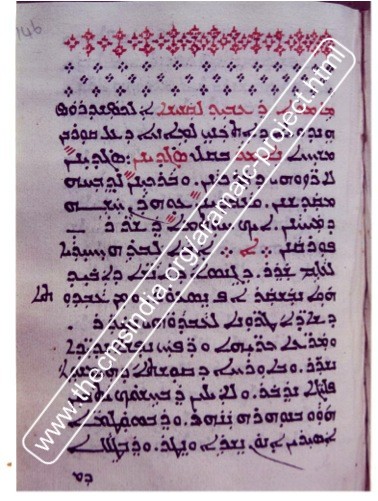 A manuscript showing the title of the acrostic hymn in Syriac by “Alexander the Indian." St. Joseph’s Monstery, Mannaanam. Photo courtesy: Fr. Antony Vallavanthara, C.M.I. 1942-2008 .
A manuscript showing the title of the acrostic hymn in Syriac by “Alexander the Indian." St. Joseph’s Monstery, Mannaanam. Photo courtesy: Fr. Antony Vallavanthara, C.M.I. 1942-2008 .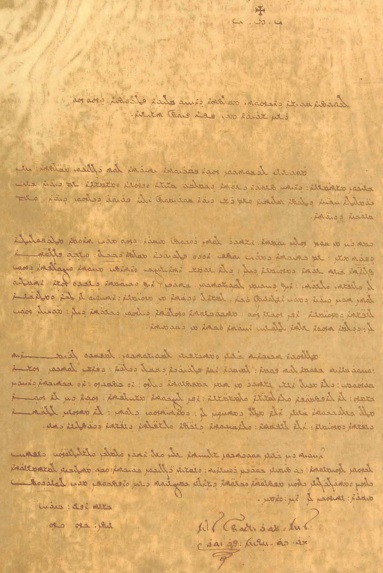 Letter written and signed in Syriac by St. Kuriakose Elias Chavara to Pope Pius IX 1792-1878, on 25 April 1870. The letter is kept at the archive of the Oriental Congregation, Rome ref: Scrit. Rif. Mal. 1875. Courtesy: Fr. Thomas Panthaplackal, CMI
Letter written and signed in Syriac by St. Kuriakose Elias Chavara to Pope Pius IX 1792-1878, on 25 April 1870. The letter is kept at the archive of the Oriental Congregation, Rome ref: Scrit. Rif. Mal. 1875. Courtesy: Fr. Thomas Panthaplackal, CMI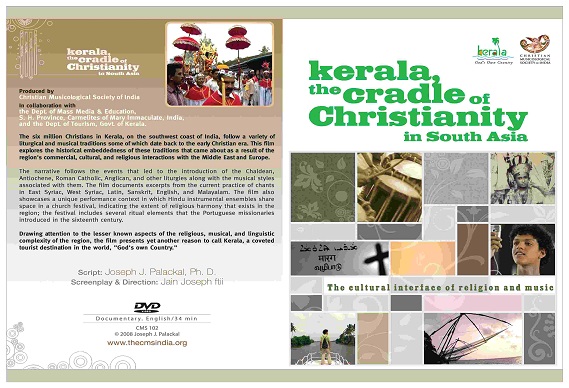 DVD Release- kerala the Cradle of Christainity in South Asia
DVD Release- kerala the Cradle of Christainity in South Asia Fr. Paul Kodamullil. Santhinilayam, Muvattupuzha, India.
Fr. Paul Kodamullil. Santhinilayam, Muvattupuzha, India. National Shrine, Washington, D. C. Chants in Syriac and Sanskrit were sung here for the first time on 7 September 2013 during the celebration of the Syro Malabar Qurbana in English.
National Shrine, Washington, D. C. Chants in Syriac and Sanskrit were sung here for the first time on 7 September 2013 during the celebration of the Syro Malabar Qurbana in English. Dr. Jacob Vellian, scholar of Syro Malabar liturgy
Dr. Jacob Vellian, scholar of Syro Malabar liturgy Persian cross with inscriptions in Syriac at the bottom, and in Sassanian-Pahlavi at the top and sides. Waliyapalli, Kottayam, Kerala.
Persian cross with inscriptions in Syriac at the bottom, and in Sassanian-Pahlavi at the top and sides. Waliyapalli, Kottayam, Kerala. Thalikasthanam Thoma Mathai Jarly with his wife Beena, at the ornate front door of their home. On the sides of the Cross at the top of the teakwood door appears the words of St.Thomas the Apostle from right to left "Maar w'alaah" My Lord and my God in Syriac script.
Thalikasthanam Thoma Mathai Jarly with his wife Beena, at the ornate front door of their home. On the sides of the Cross at the top of the teakwood door appears the words of St.Thomas the Apostle from right to left "Maar w'alaah" My Lord and my God in Syriac script. Cemetery chapel of Mar Geevarghese Sahda Church - Church of the East. "O the One who raises the dead, praise to Thy holy name." In Malayalam and Syriac scripts. Panampilly Nagar,Eranakulam, Kerala.
Cemetery chapel of Mar Geevarghese Sahda Church - Church of the East. "O the One who raises the dead, praise to Thy holy name." In Malayalam and Syriac scripts. Panampilly Nagar,Eranakulam, Kerala.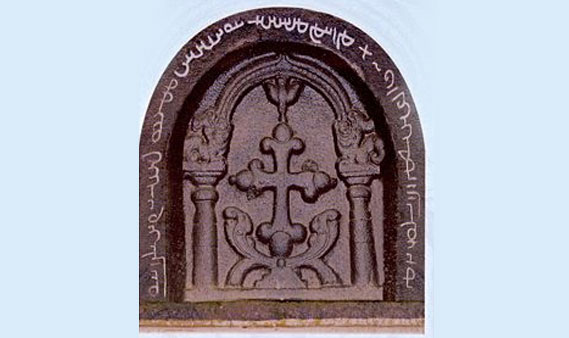 Persian Cross - Granite cross with inscriptions in Sassanian-Pahlavi (Middle Persian). Circa 7th century AD. St. Thomas Mount (Periyamalai), Mylapore, Chennai, India.
Persian Cross - Granite cross with inscriptions in Sassanian-Pahlavi (Middle Persian). Circa 7th century AD. St. Thomas Mount (Periyamalai), Mylapore, Chennai, India.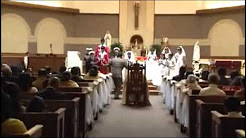 Recital of the Lord's Prayer in Syriac, "Awun d'wasmayya" by the First Holy Communion & Confirmation candidates at St.Jude Syro Malabar Catholic Church, Northern Virginia, USA
Recital of the Lord's Prayer in Syriac, "Awun d'wasmayya" by the First Holy Communion & Confirmation candidates at St.Jude Syro Malabar Catholic Church, Northern Virginia, USA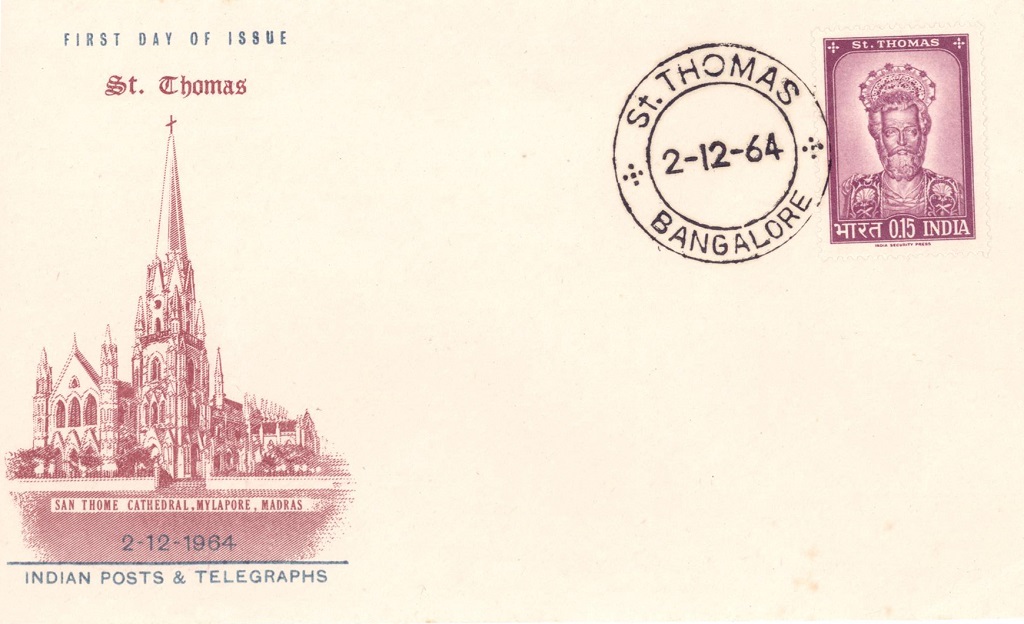 First day cover of St. Thomas India Postal Stamp
First day cover of St. Thomas India Postal Stamp Letter from the secretary to Bishop Mar Augustine Kandathil to Mr. Cyriac Kandathil. Signature is in the Syriac script
Letter from the secretary to Bishop Mar Augustine Kandathil to Mr. Cyriac Kandathil. Signature is in the Syriac script Syriac writings on the main altar at St. Mary's Forane Church, Athirampuzha
Syriac writings on the main altar at St. Mary's Forane Church, Athirampuzha Syriac writings on the main altar at St. Mary's Forane Church, Athirampuzha
Syriac writings on the main altar at St. Mary's Forane Church, Athirampuzha Syriac writings on the main altar at St. Mary's Forane Church, Athirampuzha
Syriac writings on the main altar at St. Mary's Forane Church, Athirampuzha Children sing Aramaic during First Holy Communion at St. Thomas Syro Malabar Diocese of Chicago on 26-May-2018
Children sing Aramaic during First Holy Communion at St. Thomas Syro Malabar Diocese of Chicago on 26-May-2018The Aramaic (Syriac) language in which Jesus and His disciples preached the Gospel reached South India in the early Christian era. Until the 1960s, the St. Thomas Christians in Kerala, who trace the origin of their faith to St.Thomas the Apostle, celebrated liturgy in this language. Since the vernacularization of the liturgy, the language and the melodies are on the path to extinction in the Syro Malabar Church (3.25 million members). The Syro Malabar Church, which is one of the eight independent churches among the St. Thomas Christians (6 million out of about thirty million Christians in India), follow the Chaldean (East Syriac) liturgical tradition. The immediate goal of this project is to locate as many singers as possible in the Syro Malabar Church, who were born in the 1950s or earlier, and record their memories of the language, melodies, and experiences in order to preserve them for posterity. This project is time-sensitive because of the advancing age of the resource persons. The sound and the memory of the language, and the rich and varied melodic repertory, will soon die with them. Preserving these aspects of this Semitic language is important not only for the history of Christianity in India, but also for the history of Christianity itself.
The vestiges of the Syriac chant repertoire in India fall under the category of “intangible cultural heritage,” as defined in Article 2 of the UNESCO convention held in Paris (2003) that need to be safeguarded by all means.
The Aramaic project is a part of a larger plan of a digital library of Christian music in India under the auspices of the Christian Musicological Society. This library will be beneficial to the general public, as well as academic departments that specialize in such topics as South Asian and West Asian studies, Indology, musicology, anthropology, theology, religion, Church history, Syriac Christianity, liturgy, and linguistics. The action plan includes a documentary film in English, a digital encyclopedia of Syriac chants in India, a memory bank of life experiences of the practitioners of this music, attempts to reintroduce a few chants in the vernacular liturgy, transference of melodies from the transitional generation to the next through seminars and workshops, and comparative studies of extant melodies in India and the Middle East. We hope that all these efforts will draw attention to the Christian dimension of India, and extend the geographical domain of early Christianity and music to the Indian subcontinent. The detailed action plan is as follows:
1. A digital library of Christian music in India. There are about thirty million culturally and linguistically diverse Christians in India, who form about 2.5 % of the total population of approximately 1. 25 billion. The variety of musical traditions of these Christians is a reflection, albeit at a microcosmic level, of the cultural diversity of the country. These traditions hold key to our understanding of the cultural interactions that went into the formation of local, regional, and national histories. We hope the digital library will become a valuable resource for researchers around the world.
2. A documentary film. The world has the right to know India as a country that continues to safeguard a unique cultural heritage that originated in West Asia. With that in mind, an edited version of the recordings will be used to produce a 60-minute documentary film in English with the title Jesus and India: A Connection through Language and Music.
3. A digital encyclopedia of Syriac chants. The texts and melodies of the Syriac chants have histories of their own and, therefore, deserve proper accounting. The texts have accumulated specific sonorities, phonetic variations, and even shades of meaning from use over an extended period of time in different communities. Occasionally, anonymous authors/performers have interpolated the texts with words or vocables to suit a particular theology, or a specific poetic meter, or even certain aspects of the local history. Some of the chant texts have multiple melodies. For example, the Syriac translation of the Latin litany to the Blessed Virgin Mary used to be sung in certain religious communities in Kerala with a different melody for each day in the month of May which is dedicated to different expressions of Marian devotion. The same is applicable to the Syriac translation of the famous Pange Lingua by St. Thomas Aquinas (1225-1274) that used to be sung during the Benediction of the Blessed Sacrament.
Christian Musicological Society of India is grateful to the Nasrani Foundation for providing the digital version of the Chant texts in the Syriac script and their transliteration in the Malayalam script.
4. To create a memory bank. A language is embedded in the real life experience of its users; those experiences are an integral part of the collective memory of a community. The loss of that memory is like the loss of a valuable treasure chest. The generation that lived through the transition of liturgy from Syriac to the vernacular in the 1960s continues to own an extensive memory base of sounds, melodies, and meanings of the Syriac chants; these were once significant markers of identity of the St. Thomas Christians, also known as Syriac Christians. This transitional generation is the last link to the legacy of a centuries-old tradition. If we do not capture their memories and their life stories now, they will be lost forever. The memory bank we create surely will bring big dividends for future researchers from various fields.
5. To preserve the unique sound of the Syriac language. A language is also a sonic entity. Over the centuries, the sonority of the Syriac language has assumed both a regional and a communal character in Kerala. This transformation was mediated by the vocal inflections of Tamil and Malayalam. Thus, the Syriac language constitutes a singular sonic presence among the sounds of the other languages, and adds to the sonic diversity in India. The particular sonority of a language can be compared to a particular species of a plant or a bird. In order for those sonorities to survive, they should become a part of the sound-experience of the present generation. It is our hope that the Aramaic project will help resuscitate the language by helping children and young adults to acquaint themselves with the sound of the Syriac language, as well as some of the traditional chant texts and melodies.
6. To transfer melodies from the transitional generation to the next. While many of the chant texts are available in books and manuscripts, the melodies, which were mostly transmitted orally, are fading from the memories of the transitional generation. It is imperative that we capture as many of those melodies as possible, and transfer them to the younger generation as much as possible through seminars and training sessions. It is up to that generation to own those melodies and pass them on to the next. The future is unpredictable, but that is not a valid reason for inaction.
7. A reintroduction of Syriac chants in the vernacular liturgies. It is our hope that the Aramaic project will help the younger generation to rediscover its identity as members of a Church that carries a reference to an ancient language in its official name the prefix, “Syro” in the “Syro Malabar” stands for the Syriac language. We also wish to resuscitate the language by helping the children and young adults to acquaint themselves with the sound of the Syriac language, as well as some of the traditional chant texts and melodies. Kindly refer to this section - Reintroduction of Syriac chants to know more about the progress in this area.
8. A biography of prominent personalities in Syriac chants. Life stories of individuals who served the Syriac cause in the past, and those who serve in the present in one way or another, are part of the continuing cultural narrative of the country. Among them are performers, poets, composers, teachers, scholars, researchers, and promoters. The documentation of their lives and times, and the circumstances in which they served, will be a great asset.
9. To digitalize copies of chant texts. The highly humid climate conditions in Kerala is far from congenial to the preservation of paper products. If we do not transfer the chant texts available in manuscripts and out-of-print books into a digital format now, they may be lost in the not so distant future.
10. A photo gallery. The digital gallery will include images of individuals and institutions that promote the Syriac heritage, cultural artifacts, Syriac inscriptions on the facade and altars of churches, burial places, Christian homes, palm-leaf manuscripts, etc. Indeed, a picture will speak a thousand words.
11. A comparative study of melodies in India and the Middle East. The Syro Malabar Church inherited the Syriac liturgy from the Chaldean Church in West Asia. A comparative study of the melodies in the The Syro Malabar Church and the Chaldean Church will be a worthy undertaking. The liturgy of the Hours in the The Syro Malabar Church continues to preserve some of the ancient melodies from the East Syriac tradition. For sure, melodies in both churches have undergone changes due to various reasons, but it is possible that the The Syro Malabar Church preserves earlier versions of these melodies. It is up to future researchers to substantiate that hypothesis.
In conclusion, Aramaic is not just another endangered language; it is the language in which Jesus and his followers announced the Good News. St. Thomas Christians used to take pride in the fact that they knew the "language of Jesus." When their priests chanted the Institution narrative during the Eucharistic celebration, the celebrants and laypeople alike felt a special connection with the original event that took place at the table at the Last Supper in Jerusalem; the very same words sounded almost in the same manner within the walls of their local churches in Kerala. Familiarity with the Syriac language and melodies might instill a similar sense of pride in the younger generation.
As long as reference to the Syriac language remains part of the names the churches of the St. Thomas Christians, the Syriac heritage cannot be dispensed with. A complete disconnect from the past may not be in favor of the self-awareness of the future generations; we will be creating a generation without an umbilical cord. Therefore, retaining at least a part of the Syriac heritage is essential to the continuing history.
The Syriac heritage of the St. Thomas Christians is an essential component of the colorful cultural fabric of India. The Aramaic Project will draw attention especially to the pre-sixteenth century history, and layers of cultural interactions that went into the formation of the unifying diversity that is India. It will also raise respect for India among the cultural leaders around the world as a country that continues to preserve a world heritage of humanity. Overall, the Aramaic Project is highly ambitious to say the least, and yet is time-sensitive; it is like aiming at the stars, hoping to reach at least the treetop. A concerted effort from people of all backgrounds, and a pooling of resources from all possible corners, are essential to achieve these goals. The current political upheavals in the Middle East, which is the geographical and cultural source of the Syriac heritage, are adversely affecting the preservation of these linguistic and musical treasures of humanity. For that reason, the Aramaic Project in India is an imperative.
This website is dedicated to Fr. Chandy Kadavil (1588-1677), a great son of India and a celebrated St. Thomas Christian from Kaduthuruthy, in central Kerala. He was also known by his nickname in Syriac, “Alaksandros hendwāyā” Alexander the Indian. Fr. Kadavil was a great scholar, orator, and a prominent leader of the St. Thomas Christian. He lived at a tumultuous period in the history of the St. Thomas Christian, who reacted vehemently against the religious dominance of the Jesuit missionaries (who represented Rome) in Kerala, in 1653. Fr. Kadavil commanded respect from the local Hindu Kings, as well as the Portuguese missionaries. His scholarship was so well known that the European missionaries in Kerala wrote about him in their letters to Rome and the King of Portugal. Fr. Kadavil mastered the art of the Syriac language so well as to write acrostic poems that were known even in West Asia cfr. Istvan Perczel, “A Syriacist Disciple of the Jesuits in 17th-Century India: Alexander of the Port/Kadavil Chandy Kathanar,” Journal of the Canadian Society for Syriac Studies, vol. 14, 2004; P. J. Thomas, Malayāḷasāhityawum kṛistyānikaḷum Malayalam Literature and Christians, 3rd ed., with an appendix by Scaria Zacharia, 1989, Kottayam: D. C. Books, pp. 36, 143, 149.
Fr. Kadavil’s nickname, Alexander the Indian, is interesting. The Portuguese missionaries may have given him that name because they did not want to use the Malayalam adaptation of his first name "Chandy," (Chāṇṭi), the short form for Alexander. Locally, we know about Fr. Kadavil’s nickname from an eighteenth century manuscript that is currently in the archive at St. Joseph’s Monastery, the Motherhouse of the Carmelites of Mary Immaculate, at Mannanam, Kerala. This 336-page manuscript was copied (copying was completed on February 9, 1734) by Pilippose, son of Thomas, known as Kraw Yambistha (Syriac, “near” or “on dry land,” probably a translation of the Malayalam word Kariyil or Karayil); the copyist lived near the Martha Mariam (Syriac., "Lady Mary," i.e., St. Mary's Church at Kalloorkkad, presently known as Champakkulam) in the Alappuzha district of Kerala. The manuscript starts with the Hours for Sundays for the liturgical season of Śūbārā (Syr., "Advent"). cfr. Emmanuel Thelly, “Syriac manuscripts in Mannanam Library,” Journal of Eastern Christian Studies, vol. 56, 2004, pp. 257-270
Folios 146r to 157v of the manuscript contain Fr. Kadavil’s acrostic poem. The poem’s title, possibly given by the copyist, reads: Mēmra dawīd l'qaśīśā aleksandrōs hendwāyā deskannī l'mēnāyā d'al qurbān m'śīhā, nemmar b'qal sāgdīnan (“Poetic homily by Father Priest Elder Alexander the Indian, who is called ‘At the Port’ Kadavil, about the sacrifice of Christ holy Eucharist, in the tune of Sāgdīnan”). In the Syriac literature, the terms India and Indian used to be referred to respectively as hendo and hendwāya. The copyist (Pilippose) also used the Syriac equivalent, l'mēnāyā (literally, "connected to the port") for the house name of Fr. Kadavil, (literally, “near the jetty,” i.e., he lived near a jetty or port) in Malayalam. The title of the poem also includes musically important information; the poem is composed in the meter and melody of a popular chant, Sāgdīnan. There are 22 strophes, one for each letter in the Syriac alphabet. There are twelve syllables in each verse, with rhyme on the ultimate syllable. The rhyming syllable is rēś, the twentieth letter in the alphabet. The first strophe begins in the middle of the seventh line on folio 146, on ālap, the first letter of the Syriac alphabet (see the letter in red color, in Estrangela script, separated by two asterisks).
A note on the photo of folio 146 of the manuscript: Fr. Antony Vallavanthara, C. M. I. (1942-2008) gave me this photo during my visit to St. Joseph's Monastery, a few months before his untimely death. He wished that I would include it in my future publication, and draw attention from Syriac scholars to the many literary treasures that are yet to be examined at the archive of the Monastery. A zealous promoter of the Syriac traditions of the Syro Malabar Church, Fr. Vallavanthara wanted the world to know that there were Christians in India who could compose acrostic poems in Syriac with rhyme. He also told me that he was planning to translate Fr. Kadavil's poem into Malayalam. May his soul rest in peace!
The source of inspiration for the Aramaic project is the life story of the saintly Palackal Thoma Malpan (Pālackal Tōmmā Malpān, circa 1780-1841), my collateral ancestor, a teacher and scholar of the Syriac language and liturgy, founder of the first seminary of the Syriac Christians in India, founder of the first indigenous religious congregation for men in India (see video), and a father to the Syro Malabar Church. The honorary title Malpān (from the Syriac word malpānā, meaning “teacher/scholar;” in today’s academic language, “Doctor of Divinity”) refers to his additional priestly role as a teacher of the Syriac language and liturgy, and as a preceptor of aspirants to priesthood. Thoma Malpan was the founder of the first seminary among the St. Thomas Christian, at our native village, Pallippuram, in 1818. Until this time, aspirants to priesthood followed the gurukula (literally, “home of the teacher”) system in which the students lived at the home of their teacher to receive formation to become priests. A significant part of that formation was the acquisition of proficiency in the Syriac language. One of the daily activities at the “Pallippuram Seminary,” as it came be to known, was the communal celebration of the liturgy of the Hours in Syriac. In the absence of printed books, the Malpan embarked on a difficult venture of preparing written copies of the liturgy, compiling the prayers and readings from manuscripts available from other Malpans in Kerala. The Pallippuram Seminary became a move toward the renewal and self-reliance of what eventually came to be known as the Syro Malabar Church. The Malpan’s prestigious protégé, and the dearest disciple whom he loved like a son is Saint Kuriakose Elias Chavara (1805-1871). See the image of the postage stamp issued by the Government of India, on the right side of the page. The Blessed Disciple later became the right hand of the Malpan and his close friend, Porukkara Thomma Malpan (1799-1846) in founding the first religious congregation for men in India that is currently known as the Carmelites of Mary Immaculate (C.M.I.). Inspired (or tired?) by the copying activities at the Seminary, St. Chavara established the first printing press in India, with facilities for printing Syriac texts, at the premises of the mother house of the Congregation at Mannanam in 1844, three years after the demise of his guru, Palackal Malpan.
The stories about the Malpan that my father, Palackal Kurian Joseph (1915-1983), told me almost on a daily basis instilled such awe and respect in my young mind that, when I became an altar boy in the early 1960s, I was afraid to step on the Malayalam epitaph on the Malpan’s tomb at the main altar of our parish, St. Mary’s Forane Church. The epitaph was callously destroyed during the reconstruction of the Church in 1979. Later, my father’s accounts were corroborated by reading the only biography of the Malpan that the Blessed Disciple wrote and incorporated into one of the most significant historical documents of the 19th century, Nālāgamangal (“Chronicles”) in the Malayalam language. St. Chavara’s biography of the Malpan is believed to be the first in this literary genre in Malayalam, authored by an Indian with an Indian as the subject matter. Much later, I followed in the footsteps of the Blessed Disciple, and became a devotee of the saintly Malpan. St. Chavara, who was also a Malpan at the time of writing the Chronicles, introduced himself in the opening sentence with utmost humility as “Priest Chavara Kuriakose, one of the disciples, the lesser one, of our respected Malpan, who was called by the name Thomma, of Pallippuram Palackal” May the blessings of the Malpan and St. Chavara be on all the collaborators and contributors to the Aramaic project.
Special Thanks
We would like to express our gratitude to each and everyone who helped to launch this project, especially Rev. Paul A. Wood, Pastor, and the parishioners of St. Stanislaus Kostka and Transfiguration Churches in Maspeth, New York, Maspeth Federal Savings Bank, Dr. Verghese Kannarkat, M. D., and Rev. Fr. Provincial, S. H. Provincial House of the Carmelites of Mary Immaculate, India.
Acknowledgements
Felix Simon : Program DirectorRosy Kurian : Filed work coordinator
Jarly Mathew : Research associate
Alain Godbout : Calligraphy
Sherin Joby : Office Assistant
Raina Wong : Copy editor
Joseph Thekkadath Puthenkudy : Research Assistant
At present, the idea of a Digital Library of Christian Music in India sounds like an overambitious project, yet it is something that should be done without delay. It is possible that the Aramaic project itself may amount to about 300 hours of recordings. As the scope of the project expands, so do the expenses. Expenses include remuneration to research assistants, their travel and accommodation expenses, partial remuneration to economically disadvantaged singers (which most of them are), studio expenses, recording equipment, remuneration to videographers and film editors, etc.. This can be achieved only by the concerted efforts of many generous people. To make a donation to the project, click the donate button present on the top right hand corner of the page or click here.
Those who are familiar with the region and the musical tradition can contribute to this project by sending information on individual singers, institutions, songs, books and articles, manuscripts, researches, and any other item that can be posted on this web site, and eventually added to the Digital Library. Please email the information to info@TheCMSIndia.org
Liturgical celebrations could be the ideal forum to introduce a few Syriac chants to the younger generation that was born after the vernacularization of the Syro Malabar liturgy. It was quite heart-warming to see how the 130 young singers from the Syro Malabar communities across North America sang the response to the introductory chant, Puqdaankon ("With your command") and the Trisagion, Qaddisa Alaaha ("Holy God") with great enthusiasm. This occurred during the solemn celebration of the Syro Malabar Qurbana in English at the Basilica of the National Shrine of the Immaculate Conception in Washington. D. C., on 7 September 2013. This was the first time the Syro Malabar Qurbana was celebrated at the National Shrine. Cardinal George Alencherry, the Major Archbishop of the Syro Malabar Church, was the celebrant, with Cardinal Donald Wuerl (Archbishop of Washington, D. C.) and Bishop Jacob Angadiath (Bishop of the St. Thomas Syro Malabar Catholic Diocese of Chicago) as co-celebrants. (See my correspondence with the Major Archbishop's Office regarding the inclusion of the Syriac chant in this liturgy). Incidentally, this was the very first time a Syriac chant was heard within the walls of this magnificent and, probably, the biggest Catholic Church in the USA. The revised edition of the Music Notation of the English version of the Syro Malabar Qurbana will include the notation of the two chants mentioned above.
Earlier, these two chants were introduced, on an experimental basis, during the Qurbana in Malayalam at St. Joseph’s Church, at Kadavanthara, in Ernakulam, Kerala, on July 28, 2013 (See Video 1 & Video 2). The occasion was the feast of St. Alphonsa. The positive response from the choir and the congregation prompted the Vicar, Fr. Thomas Perumayan, who is also a singer and composer, to include those chants (Video 3 & Video 4) during the celebration of Qurbana for the Sunday School students. The practice continues. This is probably the only Parish in Kerala where these chants are part of the liturgy for the catechism students every Sunday.
The grand celebration at the National Shrine in Washington, D. C., on 7 September 2013, had positive repercussions among the Syro Malabar communities in the USA. For example, the St. Jude Syro Malabar Parish at Northern Virginia included, for the first time, two Syriac chant (Awūn d’baśmayyā / Our Father, and Tālāk ruhā / Come O Spirit) as part of the celebration of the First Holy Communion, on 02 Aug 2014. The Celebrant, Bishop Jacob Angadiath, who grew up in the Syriac tradition in Kerala, was pleasantly surprised, and complimented the Pastor Fr. Tijo Mullakkara, Felix Simon and the parents for making Syriac chants a part of the religious experience of the new generation of the Syro Malabar Catholics. The Parish community has resolved to continue the practice in the coming years.
Also, the second, revised edition (forthcoming, 2015) of the musical notation of the English version of the Solemn Qurbana will include the two Syriac chants that were sung at the National Shrine. If the younger generation takes a liking to the sound and melody of these chants, more Syriac chants may be added to Sunday celebrations in the future. Thus, the children of expatriate Syro Malabar Catholics will have an opportunity to connect themselves to the very source of Christianity as well as to experience the first part (“Syro”) of the name of their Mother Church in a special way. Indeed, history is in the making.
After a year-long preparation, the field work started in July 2013. The experience gained from earlier researches for the Syriac CD, Qambel Maran (PAN Records, Netherlands, 2002), my doctoral dissertation, Syriac Chant Traditions in South India (Graduate Center of the City University of New York, 2005), the DVD Kerala the Cradle of Christianity in South Asia (2008), and my chapter in the forthcoming Oxford Handbook Music and World Christianities (Oxford University Press) was helpful in formulating questions for the interviewees. With the help of a dedicated team of research assistants and technicians, we have about 60 hours of video recordings of interviews and performances by a number of resource persons. Geographically, the focus was mainly on the central and southern parts of Kerala. One of the most resourceful interviews was with Fr. Emmanuel Thelly, C. M. I. (b. 1925), author of several books on Syriac, including the Syriac-English-Malayalam Lexicon (1996). Fr. Thelly also respected our request to read for the camera from the poem he wrote recently in Syriac, and the famous acrostic hymn of St. Ephrem the Syrian (d. 372) on the name Īśō m’śīhā (Jesus the Anointed). Reviewing, editing, and archiving of these recordings are in progress. A few samples are posted below.
In spite of over twenty years of research in the geographical area, and among the Syro Malabar Christians , I had quite a few pleasant surprises; I shall briefly mention two. First, the performance practice of “Holy, holy, holy” during the Eucharistic liturgy in Syriac on Holy Thursday used to be a unique musical and dramatic event. The reference to this event came during a preparatory conversation with Lonappan Arackal who currently serves as sacristan at St. John Nepomucene Church at Konthuruthy, Kochi, in central Kerala this is the only church in Kerala that is dedicated to this saint. Lonappan used to be the leader of music at this church when the liturgy was in Syriac. The hymn begins solemnly with melodic and rhythmic instrumental accompaniment (harmonium, violin, drum, and triangle), and continues so during the first half. In the middle of the hymn, however, instrumental accompaniment is stopped abruptly; the sacristan rings a wooden bell for a few seconds, portending the change of mood from joyful to sad; and the choir sings the rest of the hymn (“Blessed is He who came …”) in a sad, requiem manner without melodic or rhythmic accompaniment. The rest of the liturgy continues in this manner. The wooden bell replaces the church bell to mark liturgical time from this point onward, until Holy Saturday. Thus, this hymn becomes a transitional point in the observance of the Easter Tridium.
What we encountered during the field work this year is only the tip of the iceberg. The scope of the project is larger than we envisaged. Each interview hinted at more resource persons to be contacted, and themes to be explored. Obviously, many musical treasures are hidden in the memory of the older generation of church singers that are yet to be excavated. A preliminary review of the recorded materials shows that there is a need to revisit some of the singers to clarify certain points and to record more songs, if possible. We plan to start preparations soon for the next stage of the field work in 2014. Next year, the focus will be on the singers in the northern parts of Kerala, including the hilly regions of Malabar.
Academic Resources
[1-10] [11-20] [21-30] [31-40]
| # | Description | Useful links |
| 1 |
Did St Thomas Come To India? This Video can be used for research and reference. |
Video |
| 2 |
North American Story - The story nf Bilingual Qurbana in North America Reclaiming Syriac chants to Reaffirm Identity - An American Story By Dr. Joseph J. Palackal . 2019 |
|
| 3 |
The Library of Congress Webcast - Syriac Chants & Aramaic Christianity in India SPEAKER: Joseph J. Palackal DESCRIPTION: Joseph J. Palackal discusses Aramaic Christianity, an essential component of India's religious diversity. Christian faith came to the shores of South India from its source in West Asia, through the medium of the mother tongue of Jesus and the apostles. Christian Aramaic came to be known as Syriac, and due to unusual historical circumstances its tradition survived in India. |
|
| 4 | ARAM Conference on Syriac Christianity, Oriental Institute, Oxford University. From 11 to 13 July 2018 | |
| 5 | Syriac lessons (Courtesy: Church of the East, India) | |
| 6 | Knebel, Don. 2016. "The Language of Jesus in Ma'Loula. Current in Westfiled. August 16, 2016. | |
| 7 | Palackal, Joseph J. "The Survival Story of Syriac Chants among the St. Thomas Christians in South India" in The Oxford Handbook of Music and World Christianities, edited by Jonathan Dueck and Suzel A. Reily. Oxford University Press. | PDF Forthcoming. Abstract. |
| 8 | Garshuni Malayalam: A Witness to an Early Stage of Indian Christian Literature.” Hugoye: Journal of Syriac Studies, vol. 17, no. 2, pp. 263-323. See a musical reference on p.302: “… a metrical poem by a certain Priest Mathew Matthu Kattanar about the travel and death of Joseph Kariattil.” The title of the poem includes a reference to the melody, “to be sung up on the tune of the chant ‘Little Boat.’”
Istvan Perczel. 2014. |
|
| 9 |
Journal of the Canadian Society for Syriac Studies, vol. 14 -A Syriacist Disciple of the Jesuits in 17th-Century India: Alexander of the Port/Kadavil Chandy Kathanar. Istvan Perczel - 2014. |
|
| 10 | Worth, Robert F. "In Syrian Villages, the Language of Jesus Lives." New York Times International. Tuesday, April 22, 2008. | |
| 11. |
Kerala, the Cradle of Christianity in South Asia: The Cultural Interface of Religion and Music DVD. Palackal, Joseph J. 2008. |
|
| 12. |
Syriac Chant Traditions in South India. - Palackal, Joseph J . 2005. A study of the contemporary practice of model melodies of the Chaldean rite in the Syro Malabar Church, and the oktoechos "eight voices" of the Antiochene rite in the Orthodox churches. Ph.D. dissertation. The Graduate Center of the City University of New York. Director: Stephen Blum. ProQuest ID 888835631. |
Abstract. Proposal |
| 13 |
Continuum Encyclopedia of Popular Music of the World, vol. 5: Asia and Oceania- Palackal, Joseph J. 2005. Kerala, Kochi, Trivandrum. Edited by John Shepherd, et al. London and New York: The Continuum International Publishing Group, pp. 91-92, 104-105, 117-118. |
|
| 14. |
Oktoechos of the Syrian Orthodox Churches in South India. Ethnomusicology, Palackal, Joseph J. 2004. vol. 48, no. 2, pp. 229-250. |
Abstract |
| 15 |
"Interface Between History and Music in the Christian Context of South India." -Palackal, Joseph J 2004. A survey of the musical history of the Syro Malabar Church in Kerala, India, shows the mutuality of musical and historical inquiries in which musicological discourse assumes a significant role as a tool in historiography. in Christianity and Native Cultures: Perspectives From Different Regions of the World. Cyriac Pullapilly, et al., eds. Notre Dame, Indiana: Cross Cultural Publications, pp. 150-161. Booklet: 2002. |
|
| 16 |
An Introduction to Malayalam Karshon. The Harp vol. xv, pp.99-106 Koonammakkal, Thoma Kathanar. 2002. |
|
| 17 | Palackal, Joseph J 2002. Reprint 2009. Qambel Maran: Syriac Chants from South India. CD with 29 chants, 16-page booklet in English, map, 7 photographs, and bibliography. Chants in Syriac Aramaic from the Chaldean liturgy of the Syro Malabar Church of the St. Thomas Christians. Includes chants from the liturgy of the Hours, Raza, funeral services, Syriac translation of Latin chants by St.Thomas Aquinas, and chants for special occasions such as wedding and celebration of the feast of the Blessed Virgin and saints. Performers include Fr. Abel Periyappuram, C.M.I. 1920-2001, Fr. Probus Perumalil, C.M.I., et al. Recorded in Kerala, South India, in 1999 and 2000. PAN 2085. | Library catalogs & Reviews |
| 18 | The Liturgical Contributions of Blessed Chavara. -Vallavanthara, Antony. 2001. | Article |
| 19 | Palackal, Joseph J. 2001. India: Christian Music. The New Grove Dictionary of Music and Musicians. 2nd edn., vol. 12, edited by Stanley Sadie, John Tyrell. London: MaC.M.I.llan Publishers, pp. 233-34, 237. | |
| 20 | Palackal, Joseph J. 2000. Kerala Christian Musical Traditions. The Garland Encyclopedia of World Music, vol. 5: South Asia: the Indian Subcontinent, edited by Alison Arnold. New York and London: Garland Publishing, pp. 944-947. | |
| 21. | Palackal, Joseph J 2000. Kerala Jewish Music. The Garland Encyclopedia of World Music, vol. 5: South Asia: the Indian Subcontinent, edited by Alison Arnold. New York and London: Garland Publishing, pp. 948-949. | |
| 22. | Douglas Jehl. 1999. "Passing on History by Word of Mouth." - The New York Times International. Saturday, September 4, 1999. | p. A4 |
| 23. | Palackal, Joseph J . 1999. Problems and Issues in the Study of the Syriac Chant Traditions in South India. The St. Thomas Christians in India continue to preserve the Chaldean and Antiochene liturgies and chants in Syriac Aramaic that originated in the Middle East. The richness and the diversity in these chant traditions demand more scholarly attention than what they received in the past. A history of Indian music may be incomplete without the history of Syriac chants. Christian Orient, vol. 20, no. 3, pp. 176-81. | |
| 24. | Palackal, Joseph J 1999. Sangeethawum sabhaacharitrawum gaweshana weekshanathil Music and Church History: Research Perspectives Musical memories handed down from generation to generation through oral transmission among Christians in Kerala preserve the stories of cultural and religious interactions between South India, the Middle East, and Europe. Sathyadeepam, vol. 73 August 18, 1999, pp. 5, 11. Language: Malayalam. | |
| 25 | Letter from Fr. Abel Periyappuram, CMI to Fr. Joseph Palackal, CMI | |
| 26 | Palackal, Joseph J . 1995. Puthen paana: A Musical Study. An analysis of the intercultural processes that influenced the singing styles of Puthen paana, an eighteenth-century Malayalam poem by John Earnest Hanxleden, in the historical context of Christianization and religious colonization in South India. Master's thesis. Hunter College-CUNY. Director: Barbara L. Hampton. ProQuest ID: 740455261. Abstract.
|
|
| 27 |
Fr. Amos, C. M. I (1991). Letter to the editor of Carmela Sandesham December 1991 (English Translation) This letter from Fr. Amos CMI to the editor of Carmela Sandesham (for private circulations among members of the Carmelites of Mary Immaculate worldwide) is valuable to music scholars because it draws attention to the Syriac melodies that were prevalent within the CMI communities. It also points to the differences between the melodies of the same chants among the diocesan priests and the CMI priests. |
|
| 28 | P. J. Thomas Parakkunnel Ouseph Joseph Thomas. 1935 1989. Malayāḷa sāhityawum kṛistyānikaḷum Malayalam Literature and the Christians. 3rd ed., with an appendix pp. 311-540 by Scaria Zacharia. Kottayam: D. C. Books. First published in 1935 under the title Kēraḷattile kṛistīya sāhityam. Athirampuzha: St. Mary's Press. | |
| 29 | J. P. M. van der Ploeg. 1983. The Christians of St. Thomas in South India and Their Syriac Manuscripts. Rome & Bangalore: Center for Indian and Inter-Religious Studies & Dharmaram Publications. | |
| 30 | Miller, Judith. 1983. "Aramaic, Jesus's Language, is still Spoken in Syria. The New York Times. December 25, 1983. | |
| 31 | Cody, Aelred. 1982."The Early History of the Octoechos in Syria." In East of Byzantium: Syria and Armenia in the Formative Period. Nina g. Garosian, Thomas F. Mathews, and Robert W. Thomson,editors. Washington, D. C. Dumbarton Oaks. Pp. 89-113. | |
| 32 | Palackal, Joseph J . 1980. Aaraadhanakramatthil sangeethatthinulla sthaanam The Role of Music in Liturgy The ancient Syriac Aramaic chant tradition is one of the identity markers of the Syro Malabar Church in Kerala, India. Preservation of these chants should go hand in hand with adaptation of Indian classical and semi-classical styles of music in liturgy. St. Mary's Forane Church Souvenir, Pallippuram, India, pp. 71-77. Language: Malayalam. | |
| 33 | East Syriac Liturgical Poetry of the St Thomas Christians -Joseph Alencherry | |
| 34 | Emmnuel Thelly's Letter on the Kottayam Cross | |
| 35 | Emmanuel Thelly's Letter on Lā tekre lāk | |
| 36 | SAFEGUARDING THE MUSICAL TRADITIONS OF EASTERN CHRISTIANITY
Chants from East Syriac Tradition of the Syro Malabar Church - HANDOUT THE NAZRANI CHOIR, ROME |
| BOOKS [1-10] [11-20] [21-30] [31-40] |
||
| # | Book Title and Description | Useful link |
| 1 |
Introduction to Syriac - An Elementary Grammar with Readings from Syriac Literature. Thackston, Wheeler M. 1999Publishers - Maryland. Ibex |
Cover page |
| 2 |
Book by Mukherjee, B. N. 1984. Culcutta. The Indian Museum |
|
| 3 |
Dewaalya geethangal Malayalam, “Church hymns”, Edited by - Fr. Basselios of St. Theresa, T. O. C. D. Printed at St. Mary’s Press, Elthuruth 1902. 172 pages 10 cms x 15 cms. The book contains text of Syriac hymns for various occasions, for the use of the church choir. A large number of hymns are translations of Latin chants that were composed anew in Kerala. Names of translators and composers of the melodies are unknown. The text is printed in Malayalam script, indicating that Syriac literacy was on the wane among the lay people in the Syro Malabar Church, by the end of the 19th century. |
Title page. |
| 4 |
The Syriac-Malayalam Hymnal, Compiled by Rev. A.Saldanha S.J., 1937. Printed at Codialbail Press, Mangalore, for the Cathedral Church, Calicut, in 1937. Pp. 27 + 181 + x + v. Part I: Syriac chants of the solemn high mass of the Chaldeo-Syrian rite of Kerala text transliterated in Malayalam, music in Western staff notation. Part II: Malayalam devotional songs in Western staff notation. This is the first publication of Syriac melodies in staff notation in India. Probably, these melodies were composed in Kerala. The Preface in English and Malayalam, pp. 9-18 by Rev. Saldanha is quite informative, among other things, on the status Christian music in Kerala in the first quarter of the twentieth century. |
Foreword, Preface, and Table of Contents |
| 5 |
Husmann, Heinrich, ed. 1971. Die Melodien der jacobitischen Kirche, ii: Die Qāle gaoāniāie des Beit gazā. Sitzungsberichte der Österreichische Akademie der Wissenschaften, Philosophische- historische Klasse, 273 (4). Vienna: Hermann Böhlaus Nachfolger
|
Cover page. |
| 6 |
Die Melodien des Chaldaischen Breviers Communenach denTraditionen Vorderasiens und der Malabarküste Edited by - Heinrich Husmann. |
|
| 7 |
Kerala Kaldaaya Suriyaani Reethile Thirukkarmma Geethangal Liturgical hymns of the Chaldeo-Syrian rite of Kerala, Edited by - Fr. Mathew Vadakel and Fr. Aurelius.Published by- S. H. League, Aluva. 1954.
Syriac texts transliterated in Malayalam script; music in staff notation. Printed at Codialbail Press, Mangalore. |
Cover page and Table of Contents. |
| 8 |
Syro-Chaldaic Grammar by Fr. Gabriel of St. Joseph, T.O.C.D., 5th edition, Revised by Fr. Emmanuel Thelly, C.M.I. Mannanam: St. Joseph's Press (1961) |
and |
| 9. |
Ref. Code-008-040 The Akkadian Influences on Aramaic by Stephen A. Kaufman |
|
| 10. |
Ref. Code - 008-041 1957 Pontificial |
|
| 11. |
Ref. Code-008-042 Order of the Mysteries |
|
| 12. |
Ref. Code - 008-046 Thukasa |
|
| 13. |
Ref. Code-008-047 Thaksa d' Qudasa - Printed in - Puthanpally Seminary , Printer – Fr. Andrews Kalappura Malpan Imprimatur – Mar Makil Mathew , Vicar apostolic of Changanasseery,Mar Menacherry John,Vicar apostolic of Trichur,Mar Pazheparambil Alosious .Vicar Apostolic of Ernakulam. Content - Propriya , Readings of the day Mass |
|
| 14. |
Ref. Code - 008-048 Kudasha d' sleeha thuvana (Sleehanmaarude Kudhasha Kramam) - The Qurbana order of 1945 Printed by - Malpan Mathew Vadekkal, Mangalappuzha Seminary Printer-: Mar Thomas Sleeha Press, Aluva (1945) Re-Imprimatur-: Mar Augustine Kandathil , (Metropolitan Arch Bishop of Ernakulam) CONTENT
Reading for the three ninivian lent (Bautha abstinence days)
|
|
| 15. |
Ref. Code -008-049 Awsar Slawotho 2 Takso d Qurobo Published By - St. Ephrem Ecumenical Research Institute (SEERI), Kottayam Printed at - St. Joseph's Orphanage Press, Changanserry Year - 2014 |
|
| 16. |
Ref. Code-008-050 The Qurbana Book of 1901 |
|
| 17. |
Ref. Code - 008-051 Bedjan Acta MartyrumEtSanctorum V2 |
|
| 18. |
Ref. Code - 008-052 | 008-053 The Rite of the Divine Mysteries of the Chaldean Church of East |
|
| 19. |
Ref. Code - 008-054 The Liturgy of the Echarist according to the Chaldean Church |
|
| 20. |
Ref. Code - 008-055 Hallelujah A Syriac Hymnal Edited by - PERRY O. DANIELS (Minster of Clayton Presbyterion Church) Published by - ASSRYIAN PRESS - GARY ,INDIANA Year - 1930 |
|
| 21.. |
Ref Code - 008-058 Taksa D Qurbana Mar Thoma Nasrani - 1963 |
|
| 22. |
Ref. Code- 008-062 Treasure Of The Syriac Language Year - 1985 |
|
| 23. |
Ref. Code- 008-063
COMPENDIOUS SYRIAC GRAMMER BY THEODOR NOLDEKE Translated by James A. Crichton, Year - 1904, Printed by Williams Norgate, London |
|
| 24. |
Ref. Code- 008-064 COMPENDIOUS SYRIAC GRAMMERBY THEODOR NOLDEKE Edited By J. PAYNE SMITH, Year - 1904, Printed by Williams Norgate,London |
|
| 25. |
Ref. Code- 008-072 Bedgan (Hudra) It is briviary (Hudra) of the chaldean catholic church and Syro malabar church |
|
| 26. |
Ref. Code- 008-073 Bedgan (Hudra-2)It is briviary (Hudra) of the chaldean catholic church and Syro malabar church |
|
| 27. |
Ref. Code- 008-074 Bedgan (Hudra-3)It is briviary (Hudra) of the chaldean catholic church and Syro malabar church |
|
| 28. |
Ref. Code 008-076 SYRIAC GRAMMER with BIBLIOGRAPHY, CHRESTOMATHY AND GLOSSARY By Dr. EBERHARD NESTLE. Second enlarged and improved edition of the Brevis Linguae Syriacae Gramatica. |
|
| 29. |
Ref. Code - 008-077 Aramaic (Semitic Languages Outline of a Comparative Grammar |
|
| 30. |
Ref. Code- 008-091 Pattu Qurbana of Syro Malabar Church in Syriac സിറോ മലബാർ സഭയുടെ ആഘോഷമായ പാട്ടുകുർബാന വിശ്വാസ പരിശീലന കേന്ദ്രം |
|
| 31. |
Ref. Code- 008-093c Institution narrative in the Thaksa edited by Fr. Mathew Vadakel (1946)
|
|
| 32. |
Ref. Code- 008-093b Institution Narrative Thaksa of 1960 Published from Ernakulam (for private circulation only). Year -December 5, 1960. Imprimatur- Archbishop Joseph Parecattil |
|
| 33. |
Ref. Code- 008-093a Institution narrative in Syriac in the Malayalam Thaksa of 1968
|
|
| 34. |
Ref. Code- 008-093 Institution narrative Assyrian Church of the East 2003 Second edition. Printed at Mar Narsai Press, 2003. First published in 1959 |
|
| 35 |
Ref. Code- 008-094 ANAPHORA of St Nestorius Chaldean |
|
| 36. |
Ref. Code- 008-095 ELEMENTS OF SYRIAC GRAMMER BY AN INDUCTIVE METHOD< BY R. D. WILSON (ROBERT DICK WILSON), Ph d Printed at -Charles Scribner's Sons Press, NewYork 1891 |
|
| 37. |
Ref. Code- 008-096 PARADIGMS AND EXCERCISES IN SYRIAC GRAMMER BY THEODORE H. ROBINSON Fourth Edition revised by L.H. Brockington Printed at - CLARENDON PRESS, OXFORD, 1962 |
|
| 38. |
Ref. Code- 008-097 MOIS DE MARIE BY Paul Bedjan, P.D.L.M. |
|
| 39. |
Ref. Code- 008-098 RAZA - ASSYREAN CHURCH OF EAST |
|
| 40. |
Ref. Code- 008-099 BIBLIOTHEQUE SYRO CHALDEENNE |
|
| 41. |
Ref. Code- 008-100 Chaldean Language Elementary Course By Mar Sarhad Y. Jummo Rights reserved by - Chaldean Media Center Publication , San Diego, California, 2008 |
|
| Manuscripts | ||
|
Manuscript of Syriac chants in staff notation by Fr.Aiden Kulathinal, C. M. I. Copied in 1948 from an earlier manuscript now lost by Fr. Aiden Kulathinal, C. M. I., at St. Theresa’s Monastery at Ampazhakkadu, Kerala. So far as we know, this manuscript contains the earliest transcriptions of model melodies from the liturgy of the Hours in the Chaldean rite of the Syro Malabar Church, India. The 27 pages are divided into three sections: pages 1-14 contain 51 Syriac melodies from the Hours; pages 15-19 consist of notation of what looks like Western melodies to be verified without text underlay; and pages 20-27 contain Marian litanies in Latin with Syriac translation. The Syriac texts are written in Malayalam script. The original copy is at the library at Acharaya Palackal Jeevass Kendram, Aluva, Kerala. See more details in Palackal 2005, pp. 134-135. |
||
| [2020] [2019][2018][2017][2016] | ||||
| Date | Title | Author | Source | Link |
| June 2019 |
അബ്രഹാത്തിന്റെ , ഇസഹാക്കിന്റെ , ഇസ്രായേലിന്റെ ദൈവം ( The God of Abraham, Isaac, and Jacob ) A Review by Fr. John Vinayi about the lecture by Dr. Joseph J. Palackal, CMI at the American Library of Congress on 31 May 2018. . pubished in Carmela Sandesam (CMI Bulletin) No. 242 June 2019 ( Page 14 to 21) |
Fr. John Vinayi | Carmela Sandesam (CMI Bulletin) No. 242 , June 2019 | |
| 26-7-2018 | Protect Aramaic heritage
Staff Reporter - THE HINDU |
THE HINDU
|
||
| 26-5-2018 | Children sing Aramaic during First Holy Communion | Zoey Maraist | The Arlington Catholic Herald | |
| 24-5-2018 | ഫാദര് ഡോക്ടര് ജോസഫ് ജെ . പാലക്കല്, അമേരിക്കന് ലൈബ്രറി ഓഫ് കോണ്ഗ്രസില് അംഗീകരിക്കപ്പെടുന്നു | Korasan | Marunadan Malayalee | |
| 22-May-2018 | ഫാ. ജോസഫ് ജെ. പാലക്കലിന് അമേരിക്കൻ ലൈബ്രറി ഓഫ് കോൺഗ്രസിന്റെ അംഗീകാരം | Korasan | us.manoramaonline.com | |
| 22-May-2018 | ഫാദര് ഡോക്ടര് ജോസഫ് ജെ . പാലക്കല്, അമേരിക്കന് ലൈബ്രറി ഓഫ് കോണ്ഗ്രസില് അംഗീകരിക്കപ്പെടുന്നു | Korasan, NewYork | KalavediOnline | |
| 22-May-2018 | ഫാദര് ഡോക്ടര് ജോസഫ് ജെ . പാലക്കല്, അമേരിക്കന് ലൈബ്രറി ഓഫ് കോണ്ഗ്രസില് അംഗീകരിക്കപ്പെടുന്നു | Korasan, NewYork | emalayalee.com | |
| 21-May-2018 | ഫാദര് ഡോക്ടര് ജോസഫ് ജെ. പാലക്കല്, അമേരിക്കന് ലൈബ്രറി ഓഫ് കോണ്ഗ്രസില് അംഗീകരിക്കപ്പെടുന്നു | Korasan ,NewYork | malayaladailynew.com | Link |
| 21-May-2018 | ഫാദര് ഡോക്ടര് ജോസഫ് ജെ. പാലക്കല്, അമേരിക്കന് ലൈബ്രറി ഓഫ് കോണ്ഗ്രസില് അംഗീകരിക്കപ്പെടുന്നു | JPMNEWS.com joychenputhukulam.com |
Link | |
| 18-April -2017 | C N N അന്വേഷിക്കുന്ന ക്രിസ്തു ? |
മനോഹര് തോമ Manohar Thomas |
||
| 18-April -2017 |
യേശു ക്രിസ്തു സംസാരിച്ചിരുന്ന ഭാഷ മരിക്കുകയാണോ ? (മനോഹര് തോമസ്) ( Is the language spoken by Jesus Christ dying ? ) |
മനോഹര് തോമസ് Manohar Thomas |
ജോയിച്ചൻപുതുക്കുളം.കോം JPMNEWS.comjoychenputhukulam.com |
|
| 18-April -2017 |
യേശു ക്രിസ്തു സംസാരിച്ചിരുന്ന ഭാഷ മരിക്കുകയാണോ ? (മനോഹര് തോമസ്) ( Is the language spoken by Jesus Christ dying ? ) |
മനോഹര് തോമസ് Manohar Thomas |
emalayalee.com | |
| 05 Nov 2016 | "For the Love of Christ and Music" - The New Indian Express | Shevlin Sebastian | The New Indian Express | |
| 30 July 2016 | "Abha, Why Have You Forsaken Me" | Viju B | The Times of India, Page No.2 | |
| 1 August 2015. | Celebrant and speaker at the Festival of Eastern Churches, Ukranian Greek Catholic Cathedral, Central London. | Appachan Kannanchira |
Deepika.com (Pravasi Varthakal) |
PDF PDF |
| 29 July 2015 | Celebrant and speaker at the Syro Malabar Day at the Sacred Heart Church, Liverpool, Warrington, England. - | Appachan Kannanchira |
UKMalayalam.com |
PDF PDF PDF PDF PDF |
| 23 April 2014 | "St. Stan's pastor to screen film on Aramaic language" | Andrew Shilling | Queens Ledger | PDF-Print Edition PDF-Internet Edition |
| 1 May 2014 | Reverend dedicates work to Language Preservation | Sarah Iannnone | Queens Examinar | Link |
| 17 April 2014 | "Maspeth Priest Resurrecting Ancient Language" | Eric Jankiewicz | The Courier Sun | PDF-Print Edition PDF-Internet Edition |
| 29- Sept -2014. |
Koottaymayute prakaashana wediyaayi Washington, D. C. theerthadanam -(The Washington, D. C. Pilgrimage became an occasion for highlighting the unity of the Church during the visit of Major Archbishop George Cardinal Alencherry Sunday Shalom, - |
Deepika |
Link | |
| 12-August 2012 |
Christava ganangalude Sushrukshakan (CareTaker of Christian Songs) |
Deepika | Link | |
| 12 Nov-2009 | Kerala , the Cradle of Christainity in South Asia - DVD
-World Premiere at Queens International Film Festival |
Deepika News | Link | |
| 17-Nov 2009 | East meets West by ,Holly Tsang- | Queens Ledger | 'Link' | |
| Nov-2009 |
DVD Review - Kerala , the Cradle of Christainity in South Asia - DVD
|
Deepika.com |
page1 , |
|
| Nov-2009 |
DVD Review - Kerala , the Cradle of Christainity in South Asia - DVD Fr. Joseph Palackal's documentary nominated for Award- |
Manoram-online | Link | |
| Nov-20-2009 |
Kerala , the Cradle of Christainity in South Asia - DVDD Indian Priest's documentary selected for International Film festival to be held in New York city |
PCTV NewsDesk Pakistan-Christian-TV | Link | |
| Nov-20-2009 |
DVD Review -Kerala , the Cradle of Christainity in South Asia - DVD Documentry on Chrsitain music picked for Queens film festival- A Corrrespondant - India- Abroad |
Link | ||
| Nov 2009 | Performance in OffBroadway show | |||
| Nov-11-2009 |
DVD Review -Kerala , the Cradle of Christainity in South Asia - DVD -An documentry by Fr: Joseph Palackal - an Non-resident Indian selected for an award |
Joyachan Puthukkulam -eMalayalee | Link | |
| 2-Aug-2008 |
Discovering Christainity's First Home in India -DVD Screening Launch Kerala , the Cradle of Christainity in South Asia - DVD Invitation by - |
|||
| 2-Aug-2008 |
DVD Review - |
Deepika News | Link, | |
| 3- Nov -2006. | Demystifying a Musical Tradition V. Kaladharan:The Hindu | V. Kaladharan | The Hindu | |
| Oct- 4- 2005 | Christianity in India: Faith in a Multireligious Milieu." 37th Annual National Catholic Development Conference. St. Louis, Missouri. | Link | ||
| May-8-1998 |
Joseph J Palakcal speaks about Two Traditions of "Chant in India" . From 11 a.m.-3 p.m. at St. Stephen and the Incarnation Church, 1525 Newton St. NW. Free. (202) 546-1477. (MJ)- Washington CityPaper |
Mark Jennins | Washington CityPaper | |
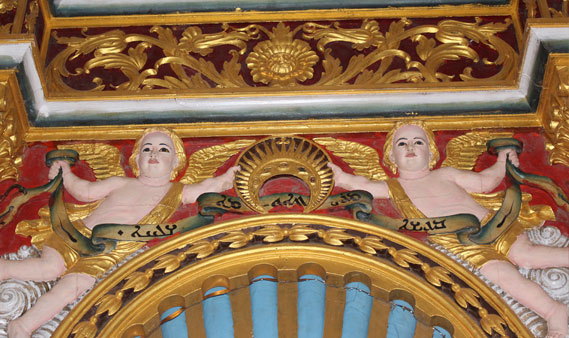 Two angels holding a banner with inscription in Syriac. Wooden reredos of the main altar at St.Joseph's Church, Vaikkom, Kottayam Dt. Photo: 7 July 2013.
Two angels holding a banner with inscription in Syriac. Wooden reredos of the main altar at St.Joseph's Church, Vaikkom, Kottayam Dt. Photo: 7 July 2013.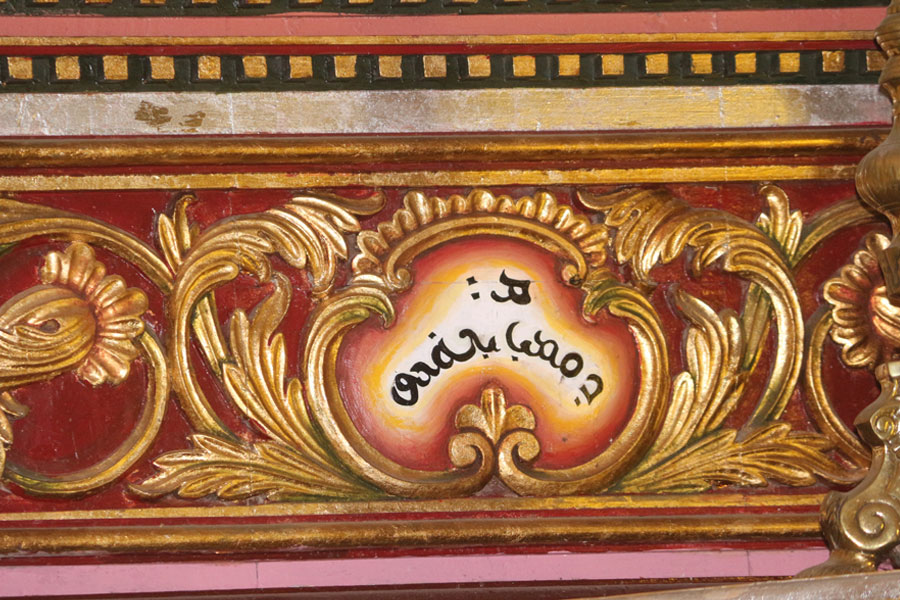 Syriac Writing at St. Marys Forane Church,Pallippuram
Syriac Writing at St. Marys Forane Church,Pallippuram Syriac writing at St. Joseph Forane Church, Vaikom
Syriac writing at St. Joseph Forane Church, Vaikom Rebecca accompanied by the neighbourhood birds sings the syriac hymn "Tālāk Ruhā"(Come O Spirit).
Rebecca accompanied by the neighbourhood birds sings the syriac hymn "Tālāk Ruhā"(Come O Spirit).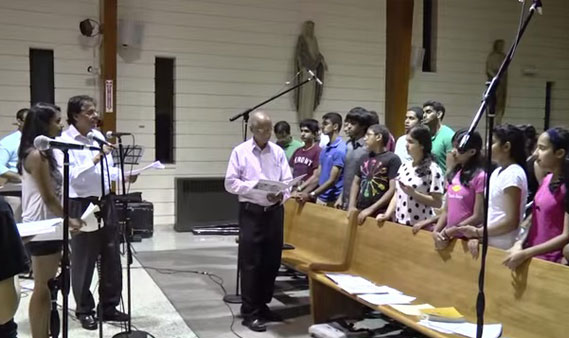 Qaddisa Alaaha (Kandisa alaha). Trisagion in East Syriac.
Qaddisa Alaaha (Kandisa alaha). Trisagion in East Syriac. The First Communion candidates singing syriac hymns at St Jude Syro Malabar Catholic Church, Northern Virginia on 02 Aug 2014.
The First Communion candidates singing syriac hymns at St Jude Syro Malabar Catholic Church, Northern Virginia on 02 Aug 2014. The Children’s Choir at Suriyanippally, Palluruthy, sing the Malayalam and Syriac versions of B’eda d’yawmaan” (hymn to the Blessed Virgin)
The Children’s Choir at Suriyanippally, Palluruthy, sing the Malayalam and Syriac versions of B’eda d’yawmaan” (hymn to the Blessed Virgin)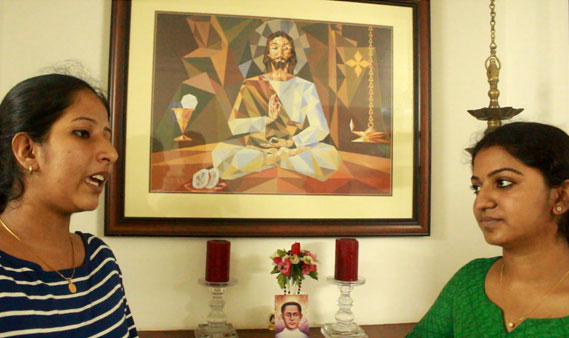 Josetta Jarly teaches the Syriac chant "We hu nehade" from Raza. 15 June 2015.
Josetta Jarly teaches the Syriac chant "We hu nehade" from Raza. 15 June 2015.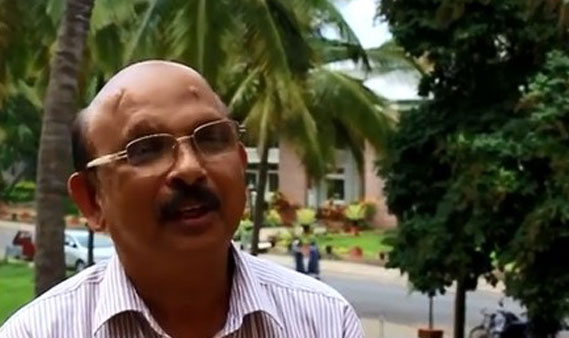 Sebastian Menachery in conversation with Dr. Joseph J. Palackal. 19 July 2014.
Sebastian Menachery in conversation with Dr. Joseph J. Palackal. 19 July 2014.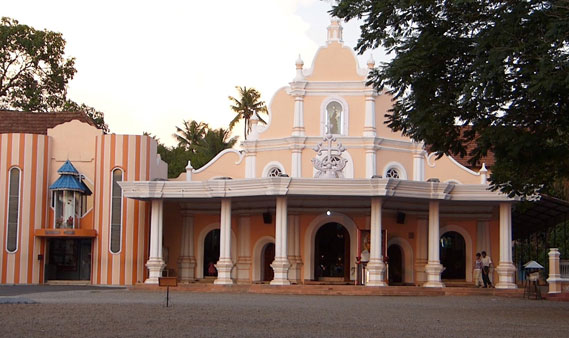 St. Joseph's Monastery, Mannanam, Kottayam Dt.,Kerala. St. Chavara (1805-1871) established the first press in India with facilities for printing Syriac texts at the campus of this Monastery, in 1844.
St. Joseph's Monastery, Mannanam, Kottayam Dt.,Kerala. St. Chavara (1805-1871) established the first press in India with facilities for printing Syriac texts at the campus of this Monastery, in 1844. Maar w'alaah "My Lord and my God" (Jn 20: 28). Words of St.Thomas the Apostle of India. Calligraphy in Estrangela script by Alain Godbout, Nov 2013.
Maar w'alaah "My Lord and my God" (Jn 20: 28). Words of St.Thomas the Apostle of India. Calligraphy in Estrangela script by Alain Godbout, Nov 2013.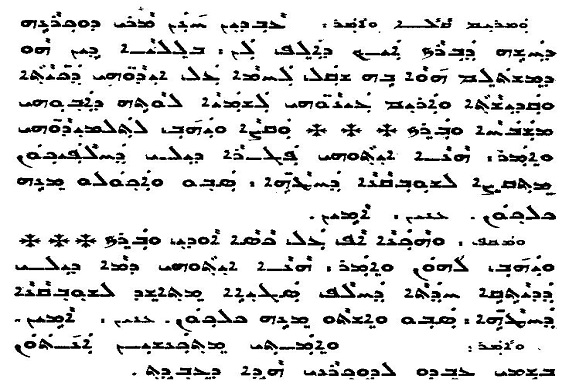 The Institution narrative in Syriac as it appears in the Malayalam missal of the Syro Malabar Church, printed in 1989 (p.88). See Melody#1 & Melody#2
The Institution narrative in Syriac as it appears in the Malayalam missal of the Syro Malabar Church, printed in 1989 (p.88). See Melody#1 & Melody#2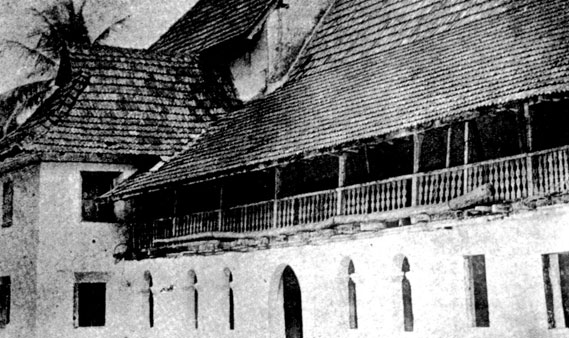 Seminary at Pallippuram (1818-c. 1855) founded by the Malpan; merged to the Seminary of St. Joseph, Mannanam (1833-1894); the edifice was pulled down c. 1978, together with the Pallippuram Church; Photograph: P. J. Kuncheria, Changanacherry.
Seminary at Pallippuram (1818-c. 1855) founded by the Malpan; merged to the Seminary of St. Joseph, Mannanam (1833-1894); the edifice was pulled down c. 1978, together with the Pallippuram Church; Photograph: P. J. Kuncheria, Changanacherry.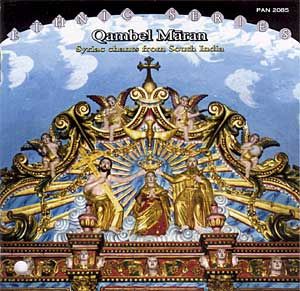 Qambel Maran: Syriac Chants from South India The first commercial CD of chants from the liturgy of the Syro Malabar Church.
Qambel Maran: Syriac Chants from South India The first commercial CD of chants from the liturgy of the Syro Malabar Church. The Syro Malabar choir at the National Shrine , Washington D.C. singing Syriac and Sanskrit chants. 7 September 2013.
The Syro Malabar choir at the National Shrine , Washington D.C. singing Syriac and Sanskrit chants. 7 September 2013. Fr.Thomas Perumayan teaches the Sunday School Children the Syriac hymn 'Laaku Maara' at St.Joseph Church, Kadavanthara. 19 July 2015.
Fr.Thomas Perumayan teaches the Sunday School Children the Syriac hymn 'Laaku Maara' at St.Joseph Church, Kadavanthara. 19 July 2015. Paul Vathappallil sings "B'eda d'yaawmaan" (On this festival day), in honor of the Blessed Virgin Mary.
Paul Vathappallil sings "B'eda d'yaawmaan" (On this festival day), in honor of the Blessed Virgin Mary.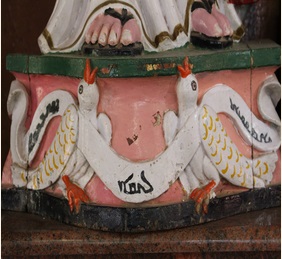 Statue with inscription in Syriac at Marth Mariam Church at Kuravilangad.
Statue with inscription in Syriac at Marth Mariam Church at Kuravilangad.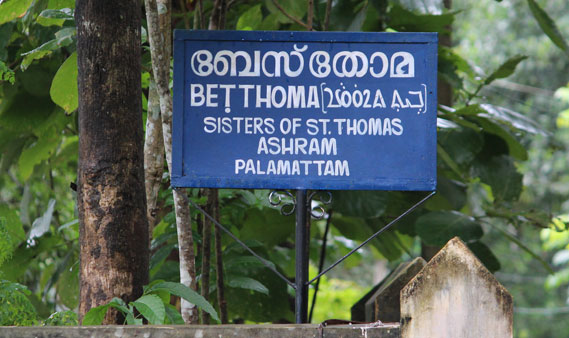 Road sign to Beth Thoma (Syriac, House of Thomas floatrightthe Apostle), the first Dayra for women in the Syro Malabar Church. The name is written in Malayalam, Latin, and Syriac scripts. Photo 29 July 2013
Road sign to Beth Thoma (Syriac, House of Thomas floatrightthe Apostle), the first Dayra for women in the Syro Malabar Church. The name is written in Malayalam, Latin, and Syriac scripts. Photo 29 July 2013 The choir at St.Joseph Church, Kadavanthara. Picture courtesy: St Alphonsa Unit, Kadavanthara.
The choir at St.Joseph Church, Kadavanthara. Picture courtesy: St Alphonsa Unit, Kadavanthara.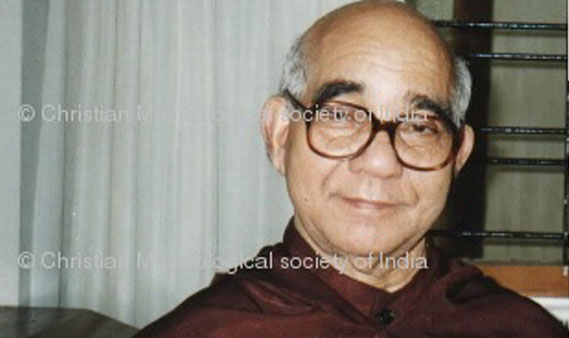 Fr. Abel Periyappuram, C.M.I. (1920-2001), lyricist and a transitional figure in the transference of some of the Syriac melodies to the vernacular (Malayalam) text.
Fr. Abel Periyappuram, C.M.I. (1920-2001), lyricist and a transitional figure in the transference of some of the Syriac melodies to the vernacular (Malayalam) text.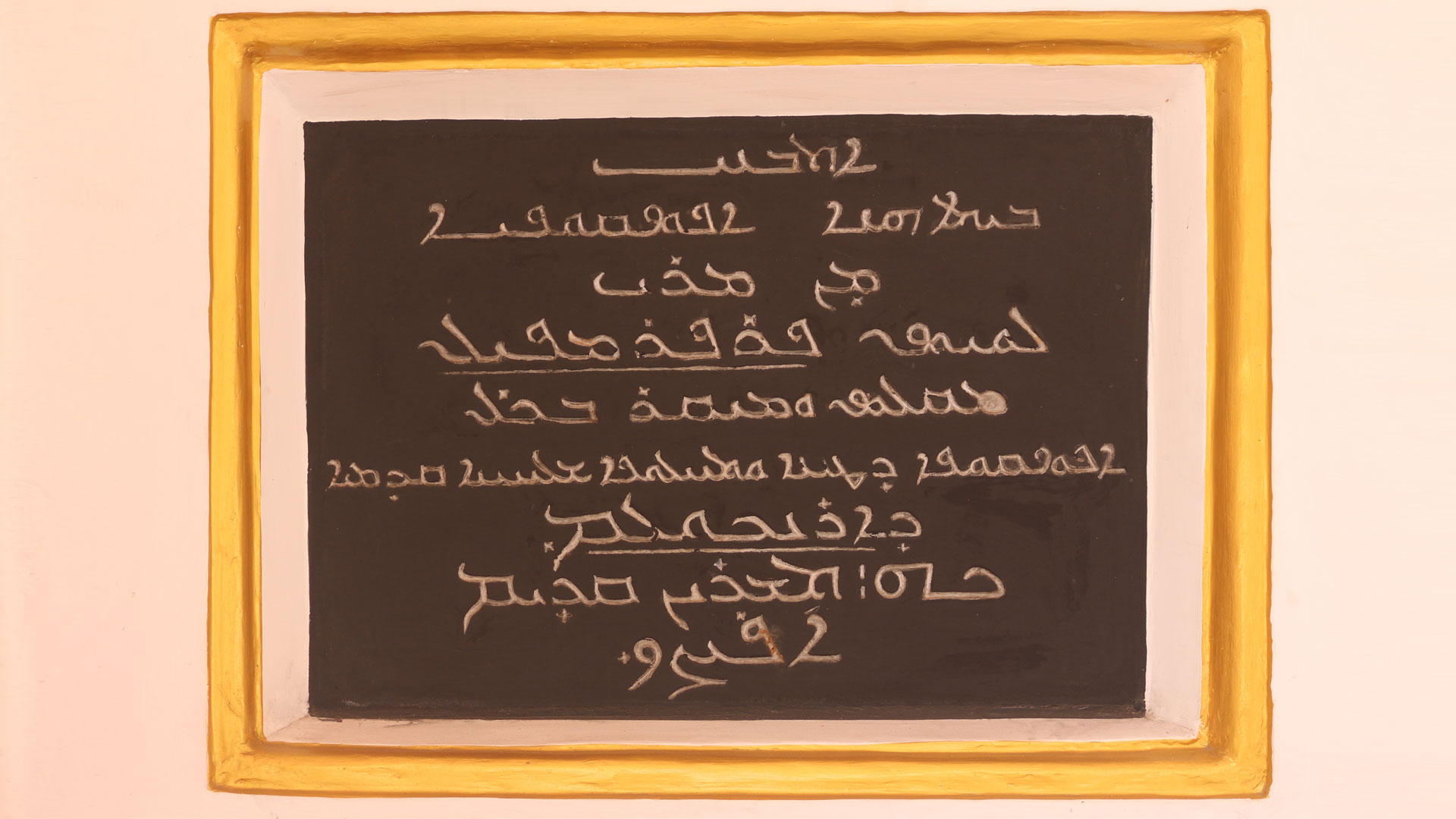 Major Arch Bishop's House, Archdiocese of Ernakulam-Angamaly
Major Arch Bishop's House, Archdiocese of Ernakulam-Angamaly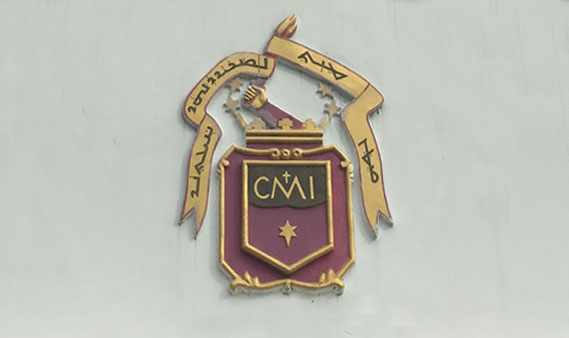 CMI Sacred Heart Provincial House, Rajagiri
CMI Sacred Heart Provincial House, Rajagiri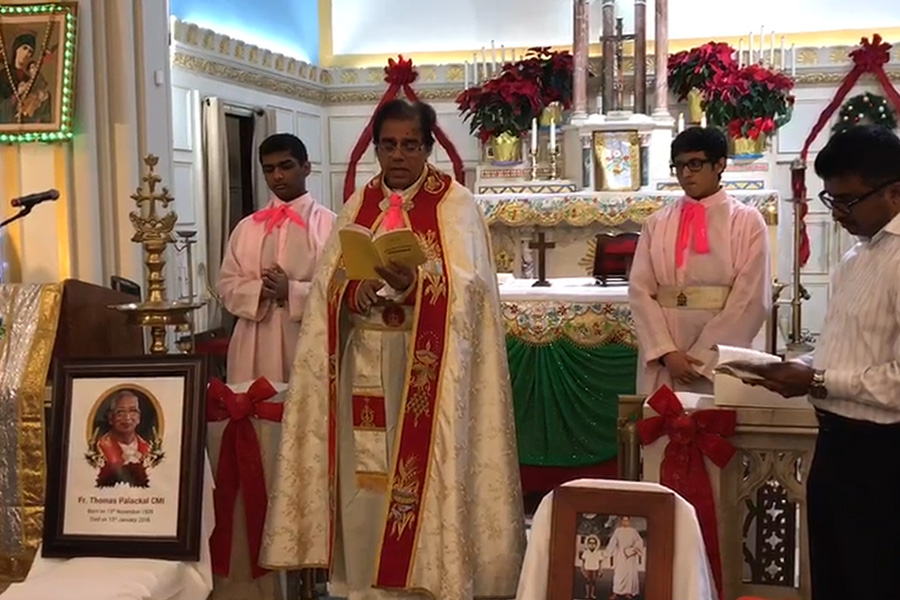 Bilingual singing of Qambel Maran by Josy Palackal at St.Thomas Syro Malabar Catholic Forane Church, Bronx, New York.
Bilingual singing of Qambel Maran by Josy Palackal at St.Thomas Syro Malabar Catholic Forane Church, Bronx, New York. Syriac writings on the main altar at St. Mary's Forane Church, Athirampuzha
Syriac writings on the main altar at St. Mary's Forane Church, Athirampuzha Syriac writing at St. Mary's Forane Church Valiapally, Kaduthuruthy
Syriac writing at St. Mary's Forane Church Valiapally, Kaduthuruthy Syriac writing at St. Antony's Church, Thycattussery
Syriac writing at St. Antony's Church, Thycattussery A Unique Marriage Invitation of Wilson Muriydan printed in Syriac along with English
A Unique Marriage Invitation of Wilson Muriydan printed in Syriac along with English Syriac writings on the main altar at St. Mary's Forane Church, Athirampuzha
Syriac writings on the main altar at St. Mary's Forane Church, Athirampuzha Syriac writings on the main altar at St. Mary's Forane Church, Athirampuzha
Syriac writings on the main altar at St. Mary's Forane Church, Athirampuzha Syriac writings on the main altar at St. Mary's Forane Church, Athirampuzha
Syriac writings on the main altar at St. Mary's Forane Church, Athirampuzha Children sing Aramaic during First Holy Communion at St. Thomas Syro Malabar Diocese of Chicago on 26-May-2018
Children sing Aramaic during First Holy Communion at St. Thomas Syro Malabar Diocese of Chicago on 26-May-2018 Syriac script on the altar - St. Mary's Forane Church Thazhathupally, Kaduthuruthy
Syriac script on the altar - St. Mary's Forane Church Thazhathupally, Kaduthuruthy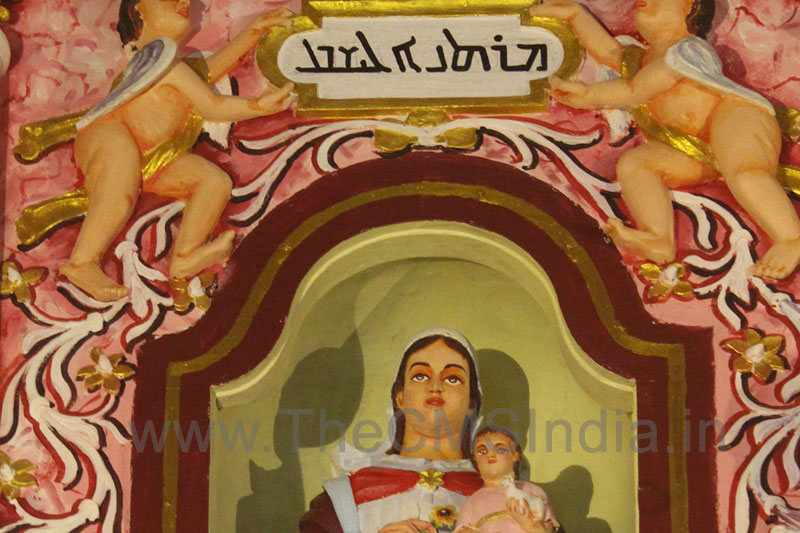 Syriac script on the altar - St. Mary's Forane Church Thazhathupally, Kaduthuruthy
Syriac script on the altar - St. Mary's Forane Church Thazhathupally, Kaduthuruthy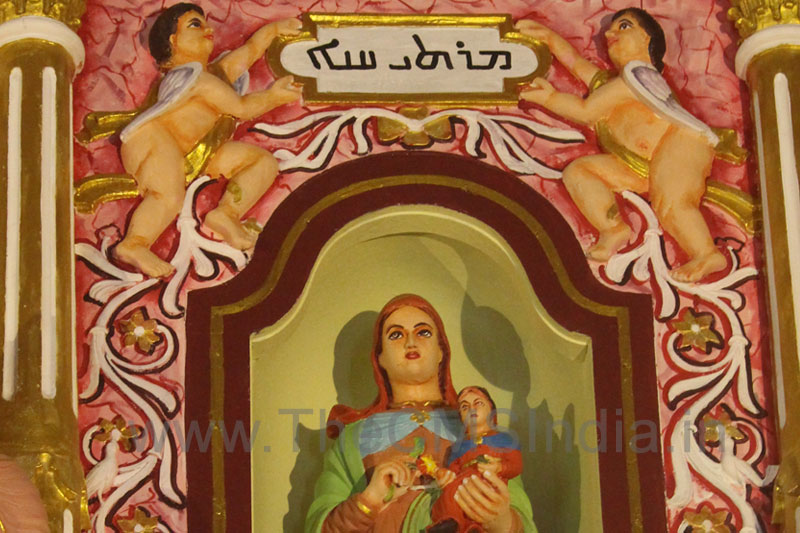 Syriac script on the altar - St. Mary's Forane Church Thazhathupally, Kaduthuruthy
Syriac script on the altar - St. Mary's Forane Church Thazhathupally, Kaduthuruthy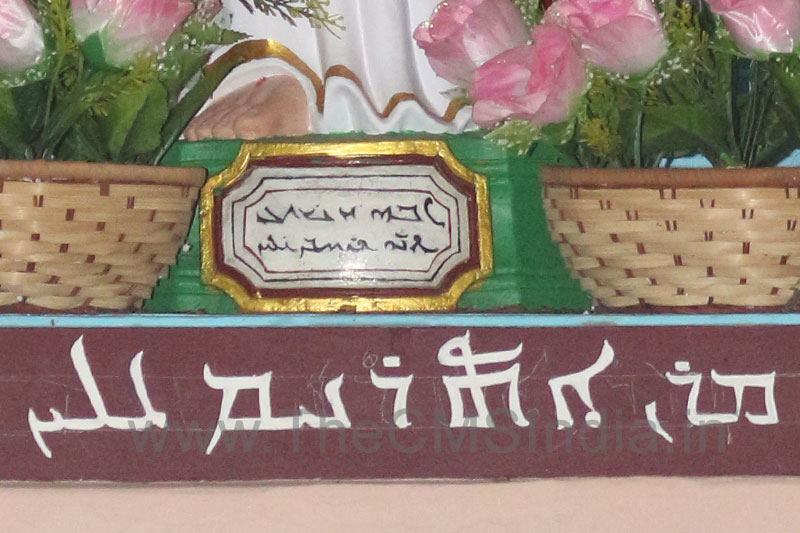 Syriac script on the altar - St. Mary's Forane Church Thazhathupally, Kaduthuruthy
Syriac script on the altar - St. Mary's Forane Church Thazhathupally, Kaduthuruthy Holy Cross at St. Dominic Cemetry Chapel, Kaduthuruthy
Holy Cross at St. Dominic Cemetry Chapel, Kaduthuruthy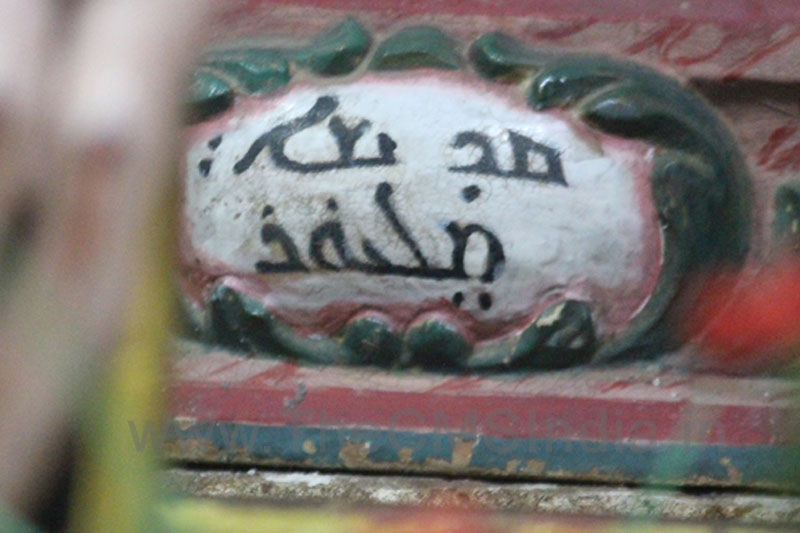 Syriac writting at St. Dominic Cemetry Chapel, Kaduthuruthy
Syriac writting at St. Dominic Cemetry Chapel, Kaduthuruthy-
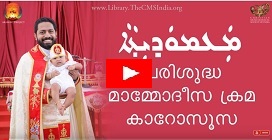 Aramaic Project Part 1
Aramaic Project Part 1
No. 270 to 261
Aramaic Project - I Interviews and Performances - Video List No. 270 to -
 Aramaic Project Part 1
Aramaic Project Part 1
No. 280 to 271
Aramaic Project - I Interviews and Performances - Video List No. 280 to -
 Aramaic Project Part 1
Aramaic Project Part 1
No. 290 to 281
Aramaic Project - I Interviews and Performances - Video List No. 290 to -
 Aramaic Project Part 1
Aramaic Project Part 1
No. 300 to 291
Aramaic Project - I Interviews and Performances - Video List No. 300 to -
 Aramaic Project Part 1
Aramaic Project Part 1
No. 310 to 301
Aramaic Project - I Interviews and Performances - Video List No. 310 to -
 Aramaic Project Part 1
Aramaic Project Part 1
No. 320 to 311
Aramaic Project - I Interviews and Performances - Video List No. 320 to -
 Aramaic Project Part 1
Aramaic Project Part 1
No. 330 to 321
Aramaic Project - I Interviews and Performances - Video List No. 330 to -
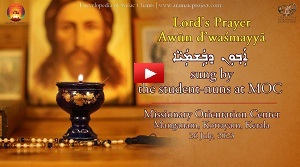 Aramaic Project Part 1
Aramaic Project Part 1
No. 340 to 331
Aramaic Project - I Interviews and Performances - Video List No. 340 to -
 Aramaic Project Part 1
Aramaic Project Part 1
No. 350 to 341
Aramaic Project - I Interviews and Performances - Video List No. 350 to -
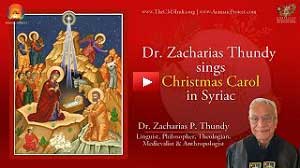 Aramaic Project Part 1
Aramaic Project Part 1
No. 360 to 351
Aramaic Project - I Interviews and Performances - Video List No. 360 to -
 Aramaic Project Part 1
Aramaic Project Part 1
No. 370 to 361
Aramaic Project - I Interviews and Performances - Video List No. 370 to -
 Aramaic Project Part 1
Aramaic Project Part 1
No. 380 to 371
Aramaic Project - I Interviews and Performances - Video List No. 380 to -
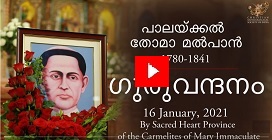 Aramaic Project Part 1
Aramaic Project Part 1
No. 260 to 251
Aramaic Project - 1 Interviews and Performances - Video List No. 260 to -
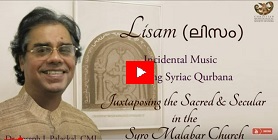 Aramaic Project Part 1
Aramaic Project Part 1
No. 250 to 241
Aramaic Project No. 250 to 241 - Interviews and Performances - Video Lis -
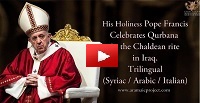 Aramaic Project Part 1
Aramaic Project Part 1
No. 240 to 231
Aramaic Project No. 240 to 231 - Interviews and Performances - Video Lis -
 Aramaic Project Part 1
Aramaic Project Part 1
No. 230 to 221
Aramaic Project No. 230 to 221 - Interviews and Performances - Video Lis -
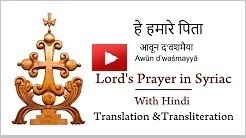 Aramaic Project Part 1
Aramaic Project Part 1
No. 220 to 211
Aramaic Project - I No. 220 to 211 - Interviews and Performances - Video -
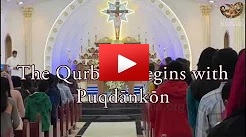 Aramaic Project Part 1
Aramaic Project Part 1
No. 200 to 191
Aramaic Project No. 200 to 191 - Interviews and Performances - Video Lis -
 Aramaic Project Part 1
Aramaic Project Part 1
No. 180 to 171
Aramaic Project - I No. 180 to 171 - Interviews and Performances - Video -
 Aramaic Project Part 1
Aramaic Project Part 1
No. 190 to 181
Aramaic Project - I No. 190 to 181 - Interviews and Performances - Video -
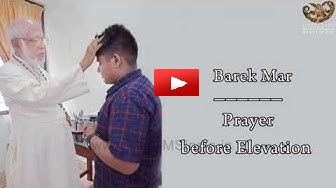 Aramaic Project Part 1
Aramaic Project Part 1
No. 170 to 161
Aramaic Project - I No. 170 to 161 - Interviews and Performances - Vide -
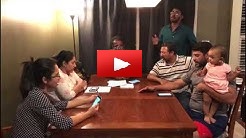 Aramaic Project Part 1
Aramaic Project Part 1
No. 160 to 151
Aramaic Project - I No. 160 to 151 - Interviews and Performances - Vide -
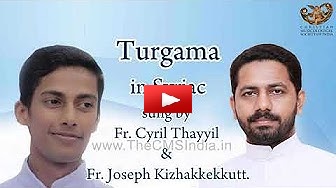 Aramaic Project Part 1
Aramaic Project Part 1
No. 120 to 111
Aramaic Project - I No. 120 to 111 - Interviews and Performances - Video -
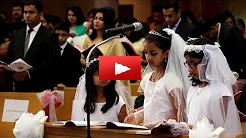 Aramaic Project Part 1
Aramaic Project Part 1
No. 110 to 101
Aramaic Project - I No. 110 to 101 - Interviews and Performances - Video -
 Aramaic Project Part 1
Aramaic Project Part 1
No. 100 to 91
Aramaic Project - I No. 100 to 91 - Interviews and Performances - V -
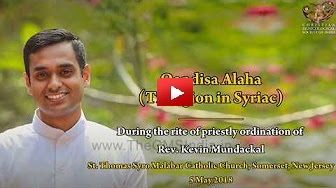 Aramaic Project Part 1
Aramaic Project Part 1
No. 90 to 81
Aramaic Project - I No. 90 to 81 - Interviews and Performances - Vi -
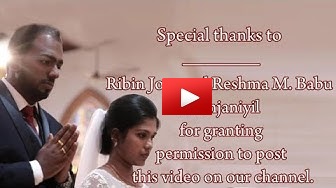 Aramaic Project Part 1
Aramaic Project Part 1
No. 150 to 141
Aramaic Project - I No. 150 to 141 - Interviews and Performances - Vide -
 Aramaic Project Part 1
Aramaic Project Part 1
No. 140 to 131
Aramaic Project - I No. 140 to 131 - Interviews and Performances - Vide -
 Aramaic Project Part 1
Aramaic Project Part 1
No. 130 to 121
Aramaic Project - I No. 130 to 121 - Interviews and Performances - Video -
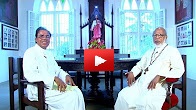 Aramaic Project Part 1
Aramaic Project Part 1
No. 60 to 51
Aramaic Project - I Interviews and Performances - Video List No. 60 to -
 Aramaic Project Part 1
Aramaic Project Part 1
No. 70 to 61
Aramaic Project - I Interviews and Performances - Video List No. 70 to -
 Aramaic Project Part 1
Aramaic Project Part 1
No. 50 to 41
Aramaic Project - I Interviews and Performances - Video List No. 50 to -
 Aramaic Project Part 1
Aramaic Project Part 1
No. 40 to 31
Aramaic Project - I Interviews and Performances - Video List No. 40 to -
 Aramaic Project Part 1
Aramaic Project Part 1
No. 30 to 21
Aramaic Project - I Interviews and Performances - Video List No. 30 to -
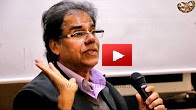 Aramaic Project Part 1
Aramaic Project Part 1
No. 80 to 71
Aramaic Project - I Interviews and Performances - Video List No. 80
Interviews
| Date | Title | Author | Source | Link |
| 07 Aug 2016 | "Akam Niranj Aramaya" | Hari Prasad | Sunday Edition, Deepika, Page No.3 | |
| 7-Sept-2015 |
Queen's Public Television Presents - Culturel Express Loui Gasparro inteviews Dr. Joseph Palackal about the Aramaic Language that was once spoken by Jesus Christ and his apostles. |
|||
| 15-Aug-2015 | 3rd-Interview on the Vatican Radio |
Personalities & Institutions
| # | Personalities |
| 1 | Saint Kuriakose Elias Chavara |
| 2 | Fr.Abel Periyapuram, C.M.I. |
| 3 | Fr. Aiden Kulathinal, C.M.I. |
| 4 | Alexander the Indian “Alexandros hendwāyā,” Fr. Chandy Kadavil |
| 5 | Fr. Alexander Kattakkayam, C.M.I. |
| 6 | Fr. Alexander Koolippura, C.M.I. |
| 7 | Fr. Augustus Thekkanath, C.M.I. |
| 8 | Fr. Aurelian, OCD Mangalappuzha Seminary |
| 9 | Fr. Charles Pyngot, C.M.I. |
| 10 | Fr. Emmanuel Thelly, C.M.I. |
| 11 | Fr. Gabriel Aranjaniyil, C.M.I. |
| 12 | Fr. George Plathottam Diocese of Palai |
| 13 | Dr. Heinrich Husmann Germany |
| 14 | Fr. Henry Suso Padiyara, C.M.I. 1918-2008 |
| 15 | Fr. Jacob Vellian |
| 16 | Justin Menachery Koonammavu |
| 17 | Lonappan Arackal Thevara |
| 18 | Fr. Ludovic Kunianthodath, C.M.I. |
| 19 | Fr. Mathew Vadakel Mangalappuzha Seminary |
| 20 | Paily Vathappillil Pallippuram, Cherthala |
| 21 | Fr. Palackal Thoma Malpan |
| 22 | Fr.Paul Bedjan 1838-1920 |
| 23 | Fr. Paul Kodamullil Diocese of Kothamangalam |
| 24 | Fr. Placid Podiara, C.M.I. |
| 25 | Fr. Probus Perumalil, C.M.I. |
| 26 | Fr. Saldanha, SJ Syriac Malayalam Hymnal |
| 27 | Fr. Sebastian Sankoorikal Diocese of Ernakulam-Angamaly |
| 28 | Dr. Thomas Koonammackal |
| 29 | Wilson Muriyadan Thrissur Collector of manuscripts. |
Institutions |
|
|
|
User comments and reviews
| Ref. Code | From | Comments |
| 009-66 |
C. J. Lazar Nov 6, 2019 |
Dear Fr. Joseph , I watched several of your interviews and read articles on your website. I am amazed at the amount of material you have collected and presented. The way you unpack complex subjects to an international audience is remarkable. Case in point being your address to the American Library of Congress, which made all Indians proud. This website is a treasure house of information on church history and it’s rich heritage. I’m certain that the future generations will thank you for this fascinating endeavor you have taken on by racing against time. Thank you for your contributions in preserving our rich heritage. Please continue the stupendous work and I wish you all success. CJ Lazar |
| 009-65 |
Amel Antony Oct 9, 2019 |
Subject : Fr. Cyril Thayyil: A Promise to the future of Syriac chants in India Thayyil Cyril Kathanar is indeed a beacon of hope for all of us who cherish our Syriac tradition and earnestly wish for a revival . From the interview , its clear that the lamp lit by Rev Palackal Ousep Kathanar is going to enlighten many , through the likes of Thayyil Kathanar and Mattathil Kathanar . What differentiates Thayyil Kathanar is his ardent passion for the language and East Syriac Liturgy . At the same time he is willing to experiment , to make it more appealing for the youth . Solemn Qurbana should be sung in the traditional manner , but new tunes should be encouraged to extend the reach . I'm glad that efforts are on in Chicago and also in Pala to that effect .
|
| 009-64 |
Tensen kalarickal Oct 3, 2019 |
Subject : Fr. Cyril Thayyil: A Promise to the future of Syriac chants in India Rev. Fr. Thaiyyil is a blessing to the Syro Malabar church especially for those who love Syriac liturgy. A great talent... soulful singing! Another dedicated, devoted and talented priest like Rev. Fr. Saji Mattathil. The topics discussed in the interview are very relevant, informative and inspiring. Many thanks to Rev. Fr. Joseph Palackal for his great initiative and tireless effort in preserving, propagating and popularizing the rich Syriac liturgy! I am sure that Rev. Fr. Palackal’s interviews would be a great asset for the generations to come! Congratulations and God bless!!! |
| 009-63 |
Anu James September 30, 2019 |
Subject : Marriage of Ribin Jose and Reshma: Reclaiming an old custom
I honestly can't get over how beautiful and meaningful this ceremony is ! ? The Syriac chants sung in malayalam are also heavenly and the choir has done a Great job in that ! |
| 009-62 |
Sijo Mathews August 1, 2019 |
Subject : Marriage of Ribin Jose and Reshma: Reclaiming an old custom
Really brave step of incorporating old customs. Also Achans earthly voice really stands out... very nice |
| 009-61 |
Edwin Jose August 1, 2019 |
Subject : Marriage of Ribin Jose and Reshma: Reclaiming an old custom
വേരുകൾ ദുർബലം എങ്കിൽ വൃക്ഷം തീർച്ചയായും അധഃപതിക്കും. എന്നാൽ വേരുകൾ ശക്തമെങ്കിൽ മരം മുകളിൽനിന്നു വെട്ടിയാലും വീണ്ടും തളിർക്കും. ഇത് നമ്മെ പ്രകൃതി തന്നെ പഠിപ്പിക്കുന്ന പാഠമാണ്. ഇത് എന്നെങ്കിലും ഒരിക്കൽ സിറോ മലബാർ സഭ മനസ്സിലാക്കട്ടെ എന്ന് ഞാൻ മാറാൻ ഈശോ മിശിഹായോടു പ്രാർത്ഥിക്കുന്നു< |
| 009-60 |
Amal Antony August 29, 2019 |
Subject - Sophia Chirayil sings Syriac chant during personal prayer There is nothing more heartening than seeing one's efforts bearing fruit and I'm sure Rev Palackal Kathanar would have felt so , interviewing Sophia Chirayil. Our only prayer is that , let a thousand flowers bloom in the garden of Aramaic heritage & Chants ! |
| 009-59 |
Amal Antony August 15, 2019 |
Subject - Qandisa alaha during bilingual Qurbana at Syro Malabar Convention in Houston Yet another proud moment for the faithful of SMC . Bilingual Qurbana is catching on and yes the enthusiasm of the youngsters is so heartwarming . Let me place on record my deepest appreciation for the sincere efforts and perseverance of Rev Palackal Ousep Kathanar in making this possible When a section of the SMC in Kerala is still unable to come to terms with the history , identity and unique Patrimony of the Church , St Thomas Diocese of Chicago stands tall as a beacon of hope . Lets pray that these videos would be watched by many and they would in turn get inspired to demand bilingual Qurbana in their Parishes Even as we edify ourselves in reclaiming our liturgical heritage , its a time for introspection as well. His Beatitude is unable to celebrate a Bilingual Qurbana in Ekm Angamaly Archdiocese for obvious reasons . For that matter even the Qurbana as decreed by the Holy Synod is an anathema for a section of the clergy and they indulge in wanton additions and deletions . However lets dream and hope for a day when the SMC - would stand united as a church of the East Syriac tradition enriching this great Catholic Communion |
| 009-58 | 
August 14, 2019 |
Subject - Institution Narrative in Syriac during bilingual Qurbana at Syro Malabar Convention This was one of the most memorable moments of this Qurbana! To hear the words of consecration in the language of our Lord... It felt like I was there on the night of Passover with the disciples. |
| 009-57 | 
Micky Finn August 13, 2019 |
Subject - Aramaic Project 143- Dr Joseph Palackal introduces two Syriac chants during Qurbana in Houston (Armaic Project) Dear Fr. Joseph, Thank you for the English captions....so appreciated by your English speaking followers...the chants, always soul reaching, are more meaningful. ( Source - Comments from -facebook/aramaic-project page |
| 009-56 |
Arnold Gregory Alphonso August 4, 2019 |
Subject - Mr. Jerry Amaladev Dear Mr. Joseph, Very delighted and thank you so much for your reply. (I hope I have addressed you properly). I will surely send an email to Mr. Jerry Amaladev about it. Thank you again for the wonderful videos. I was fascinated by the Christian heritage of Kerala and it has been very helpful understanding the history behind the various forms of sacred music in Kerala, and how it evolved over time. Kind regards, Arnold |
| 009-55 |
Abin Koovaplackal April 15, 2019 |
Subject: CD of Syriac chants: Qambel Maran Dear Palackal Acha, I am Abin Koovaplackal from Melbourne, Australia. Originally I am from the Eparchy of Palakkad. I am a nurse by profession and has migrated to Australia in 2011. I am married to Simi. She is also working as a nurse here. We got a kid Thomas - to be 3 yrs in May and Simi is carrying now. Firstly I would like to congratulate you for the great work you are doing through the Aramaic Project. It is really inspiring and courageous. I pray the Holy Spirit guide and help you in your endeavours. I have attended a Mass celebrated by you in Canberra years before I remember buying the Margam CD and some posters. However, I recently came to see your youtube channel which is a great source of exciting information Truly we study history of people around the world, but know little about our own history. Though we Syro Malabar Christians claim that we have a faith that hails from St. Thomas the apostle, It is really eye opening that historical evidences that connects us to the Apostle are fading away unnoticed. It is really sad that our generation has no clue about any clue of the rich heritage we had.I still remember my late father used say that in his childhood days the mass was in Suriyani and later it was changed to Malayalam. But he didn't had any further idea regarding it. Not to blame anyone, we Indians are generally poor in documenting and transferring our history.Now regarding the CD, I can buy the original CD and booklet. I am happy to bear the postal charges too. Please let me know how to make payment. Do I just click through the donate button? But acha I would like to have the electronic version of tracks too if its possible for you. Secondly, I would like to tell you that I am interested to learn Syriac language also. I came to know through your videos the initiative of priests like Koonammakkal Thoma Kathanar to teach Syriac to the common people. However, being living here in Australia, what are our options here. I truly look forward to learn the language so that at least I can pass it to my kids. Moreover, I would like to extend my full thoughts and prayers for your great mission and I wish you success. Thank you very much Acha |
|
|
||
| 009-54 |
Robert George Feb 11, 2019 |
Subject - Dr. Joseph J.Palackal, CMI introduces Syriac chants at his native parish. ഒരു പാത്രം പായസത്തിനു വേണ്ടി കടിഞ്ഞൂൽപുത്ര സ്ഥാനം കൈവിട്ട ഏസാവിനാപോലെയാണ് സിറോമലബാർ സഭ ... പിന്നീട് അവകാശം പ്രാപിക്കുവാൻ ആഗ്രഹിച്ചപ്പോൾ അവൻ തിരസ്കരിക്കപ്പെട്ടു..കണ്ണീരോടെ അവൻ അത് ആഗ്രഹിച്ചെങ്കിലും അനുതപിക്കാൻ അവന് അവസരം ലഭിച്ചില്ല നഷ്ടപ്പെട്ടുപോയ സുറിയാനി പാരമ്പര്യം വീണ്ടെടുക്കാൻ അവൾ എത്രമാത്രം ആഗ്രഹിക്കുന്നു ..കഷ്ടപ്പെടുന്നു.. |
| 009-53 |  Joy Kaniamparambil March 3, 2019 |
Subject - Josetta Jarly teaches the Syriac chant "We hu nehade" from Raza Really good & interesting. Congratulation to the teacher & her student. Both are equally good Thank GOD. Our second generation is also equally good in Suriyani Songs. Best Wishes to both. |
| 006-52 |  Abu Alex March 17, 2019 |
Subject - Syriac chants during the Nuptial Qurbana for Abu Alex and Stephy Joy My sincere thanks to Christian Musicological Society of India and Fr.Joseph Palackal CMI. This YouTube channel is a real inspiration for me and so many others. |
| 008-051 |
Theresa Poganik March 05, 2019 |
Subject - Aramaic Project 121 - Dr.Joseph J Palackal, CMI at the AMERICAN LIBRARY OF CONGRESS Thank you for sending these links. I enjoyed watching your interview with Ms. Groce from the Library of Congress. I enjoyed hearing you sing. This all helped me to understand what you are accomplishing. Father, you are a national treasure !!! |
| 006-050 |
March 2, 2018 |
Subject - Aramaic Project 70 Solemn Sung Qurbana in Syriac. Fr. George Plathottam fr george plathottam of blessed memory....he is the inspiration behind the revival of syriac language in syro malabar church......thank u father....poosh bashlamma kahna dakya..... |
| 006-049 |
March 2, 2019 |
Subject - Aramaic Project 70 Solemn Sung Qurbana in Syriac. Fr. George Plathottam We must have Syrian Mass at least once in a month. Else, how are our youth and children going to know their rich heritage,? Already so many people are ignorant. It is truly sad. |
| 006-048 |
Amel Antony Feb 18, 2019 |
Subject - Aramaic Project 121 - Dr.Joseph J Palackal, CMI at the AMERICAN LIBRARY OF CONGRESS Informative and interesting. Listening to this interview , I do hope that many would be motivated to rediscover our Heritage and Patrimony. Rev Palackal Ousep Kathanar can see his efforts bearing fruit- more groups coming into Social media, discussions on FB and so on. Its so heartening to know that Qambel Maran is going to be redone . At the same time many of us look forward to a book from you- to start off , it could be your Doctoral Thesis ! |
| 006-047 |
Amel Antony Feb 3, 2019 |
Subject - Aramaic Project-116. Mebin John (Rooha Media), on a mission to promote the Syriac heritage An inspiring interview indeed ! The story of Mebin John is going to have a cascading effect on the younger generation . For those who thought that Syriac tradition is irretrievably lost , Rooha Media is a befitting reply. Mebin has imbibed the true spirit and passion of HE Late Eugene Cardinal Tisserant - " I love your Church , because I know its history ". Also it shows that , if you are determined and passionate regarding Syriac traditions and language , you can make a difference in your own way. With the huge success of the Syriac Music competition and the on going Speech competition regarding Ecclesiastical vision of Mar Paremakkal, its great going . Lets pray to Almighty that this movement acquires a critical momentum, that can sweep away the cobwebs of Latinisation and help us reclaim our identity as a Church of the East Syriac Tradition |
| 006-046 |
Ahmed Shameer Jan 24, 2019 |
Subject - Aramaic Project 115 - Syriac words in Malayalam prayer vocabulary: Antony & Elamma Pathinaril It is very important to record this so that we know and understand how a language and its vocabulary is evolved over a period of time. Great effort.. This will be very helpful for scholars.. |
|
|
||
| 006-045 |
Prema Antony Dec 11,, 2018 |
Subject - Aramaic Project-109. Dr. Joseph J. Palackal's lecture at The American Library of Congress To revive a dying tradition , it is important to create a wider audience and that too among the intelligentsia. Dr Joseph Palackal's lecture is a conscious effort in this direction. The Portuguese Missionaries ( Franciscans were an exception ) , and the historians that followed painted Mar Thoma Christians as Nestorians and Schismatics.' Sagdinan Mar and Bar Mariyam' are the living traditions which attests to the orthodoxy of Mar Thoma Christians. Languages become extinct when they are no more spoken /used by the concerned. Despite a low level of Syriac literacy the language survived thus far because it was the liturgical language and the faithful made the connection to 'Isho Mishiha'. For Syriac to regain its lost glory , liturgy has to become bilingual with introduction of syriac chants wherever possible. Simultaneously there has to be a campaign to spread this awareness about the rich Syrian tradition and heritage Let us give up this dichotomy - Being a proud Syro Malabarian and at the same time denying the Syriac Patrimony ! |
| 006-044 |
Akhil John Oct 26, 2018 |
Subject: Comment posted in youtube Aramaic project 71- Fr. Varghese (Saji) Mattathil in conversation with Dr. Joseph J. Palackal Those memorable days...I can't forget... evening practices...Sajiachan...and also I thank God for selecting me for even I have no background of singing...and be there as Shamshana....for an uncountable number of masses..... |
| 006-043 |
Dr. Amel Antony Oct 2, 2018 |
Dear Mr. Joseph Puthenkudy, Greetings from Kochi ! Your interview with Rev Palackal Ouseph Kathanar was really impressive and I'm sure would evoke great pride and prestige in concerned SMC members , regarding our Syriac patrimony and heritage. If you happen to come to Ernakulam , would like to meet you Heard from Rev Palackal that you would be in India for some time Regards, Dr. Amel Antony |
| 006-0042 |
Chris Thomas Chacko Sep 24, 2018 |
Praise be to the holy name of the almighty I feel extremely proud of you because, you stand along the traditions of the Mar Thomas Christians. Traditions whether it is of an ecclesia or a society are to be safeguarded. Mar Thomas Christians are in need of this quality, because traditions are our asset and it is our Syrian Tradition. Mar Thomas Christians use two Syrian traditions, East and West.
With heartfelt gratitude, I remember Fr.Palackal and Bro. Joseph who are accomplishing this Aramaic project. Let the Almighty God bless us for safeguarding our traditions. Yours, |
| 006-0041 |
Akhil George Sep 19, 2018 |
Subject- Joseph Thekkedath Puthenkudy (Rocky)-Interview Rev. Father Am writing this email to express my opinion about the interview of rocky brother that I watched on youtube. I really liked the video very much, and it was so informative for me as a Catholic, I found it's so interesting the fact he shared and his interest in learning Syrian Catholic, I know him personally for years,we met in a retreat centre called Makkyad in Wayanad, now am working as an workforce analyst in New Brunswick, Canada, he is my best friend or I would say, my brother, we contact once in a week and he is there for me for giving advises and prayers . AM really thankful to you for making such an impressive interview with Rocky brother and it is so informative. Am glad that I found the video on youtube and got an opportunity to contact you as well, looking forward to your reply. With all respect and proud as Catholic Thanks |
| 006-0040 |
Babu Lonappan Sept-12-2018 |
Subject - Reply to the comment posted by Amel Antony (Below comment post) Only a week back, I came across this video. It was really reassuring to see that our ancestral roots are deeply routed in our faith irrespective of continents. My mind goes to the His words that " My Gospel would be preached from one end to other...Till the end". Proud to see that the Syro Malabar church, in its all abundance showering blessings to her children.Special thanks to Choir and Clergy who took pains to stand up to the desired levels. Good work...will be appreciated, forever. |
| 006-0039 |
Sept- 10 -2018
|
Subject: Comment posted in youtube Aramaic Project 100 Video- A Historic Event - Solemn Qurbana in Syriac Dukhrana Perunal Celebrants Rev. Fr. Varghese (Saji) Mattathil "Indeed it was an experience worth cherishing in everyway - not only in terms of evoking piety and elevating one into higher levels of spirituality, but also the way the Syriac language strikes an inner chord Heart felt thanks to Rev Mattathil Varghese Kathanar and the choir lead by Jones Kalarickal. Also appreciate the untiring efforts of Rev Palackal Ouseph Kathanar, who leaves no stone unturned in the path of revival of this ancient heritage of ours. As mentioned its a historic event and a heavenly blessing that happened on the feast of Dukhrana. Probably it would be the Diaspora thats going to be in the forefront of this movement. - This event being a source of inspiration for the young Syro Malabareans to reclaim their patrimony. Syriac could after all turn out to be a unifying factor and I suppose the concerned holding responsible offices would consider this -instead of pushing Malayalam. Even in Kerala , the new CBSE generation is not comfortable with Malayalam |
| Related resource (s) | ||
| 006-0038 |
Robert George Sept-5-2018 |
Thanks Father for your wonderful works. Your works have really helped me to learn more about my roots. I pray to Alaha that your efforts will be recognised and you will get necessary monetary support. I hope you have some interviews/videos or other resources to share about the songs of the Liturgy of Hours of Syro- malabar church. I’m eagerly waiting for new updates in the youtube channel. Regards, Robert |
| 006-0037 |
Amy Catlin-Jairazbhoy Aug -24 -2018
|
Hello Joseph, How are you managing in the disastrous floods??? Where are you??? Your projects are truly inspired and inspiring. What a marvelous website! I hope you have an opportunity to access Bake's 1938 recordings of Syrian Christians in Kerala, whether at AIIS in Gurgaon, or in Calicut University, where I deposited digital copies in January 2018. They might provide some insights into the history and audio documentation of Syrian Christian liturgy. With my sincere prayers for your safety and wellbeing, Yours, Amy Prof. (Adjunct) Amy Catlin-Jairazbhoy, |
| 006-0036 |
Jan -10-2018
|
Dear Joseph, Thank you for your response. We do miss dear Choomar Choondal, and would love to see his 1989 letter. We saw him last in 1994, after working with him again in 1991. I do hope his daughter "Binty" (?) is doing well now. I'm at AIFF right now on the jury and can't open your website, but hope to learn more about your project. Must rush to the screenings. Perhaps you can make use of the Kerala materials we have archived at ARCE. This includes Syrian Christian recordings made by Bake in 1938, and our own either from 1984, 1991 or 1994.Bishop Mar Aprem was most helpful. Congratulations on the talk at Oxford, and best wishes for your field work in Kerala! Yours, Amy Prof. (Adjunct) Amy Catlin-Jairazbhoy, |
|
Related resources |
||
| 006-0035 | 
Dr. Amel Antony Aug-7-2018 |
Subject -Aramaic Project-93. Fr Issac Chackalaparampil, CMI Youtube posted comment Thank you Fr Palackal for interviewing Fr.Isaac Chackalaparampil. Listening to the recital of Hail Mary in Aramaic is a totally unique experience . What is heartening for the present generation is the verve and passion for Syriac prayers. And the call for respecting every rite is a noble ideal- though in practical terms it is unidirectional; respect for the dominant rite , neglect curbs and restrictions for others ! |
| Related resource | ||
| 006-0034 | 
Amel Antony Aug-14-2018 |
Subject -Aramaic Project -100 A Historic Event - Solemn Qurbana in Syriac Youtube posted commentIndeed it was an experience worth cherishing in every way - not only in terms of evoking piety and elevating one into higher levels of spirituality, but also the way the Syriac language strikes an inner chord Heart felt thanks to Rev Mattathil Varghese Kathanar and the choir lead by Jones Kalarickal. Also appreciate the untiring efforts of Rev Palackal Ouseph Kathanar , who leaves no stone unturned in the path of revival of this ancient heritage of ours. As mentioned its a historic event and a heavenly blessing that happened on the feast of Dukhrana. Probably it would be the Diaspora thats going to be in the forefront of this movement. - This event being a source of inspiration for the young Syro Malabareans to reclaim their patrimony. Syriac could after all turn out to be a unifying factor and I suppose the concerned holding responsible offices would consider this - instead of pushing Malayalam. Even in Kerala , the new CBSE generation is not comfortable with Malayalam Qurbana text and the Suriyani Qurbana with its soothening melody and the appealing spiritual mood can be a game changer. Imagine a time when our liturgy through Suriyani Qurbana would no more be a matter of discord, factionalism or disunity , and on the contrary leading to an overall spiritual renewal and organic growth , enabling SMC to claim its due worth as an authentic Eastern Church May God bless Rev Elambasseril George Kathanar and let many emulate his pro active steps for a cause which many of us thought 'is beyond redemption'. |
| Related resource | ||
| 006-0033 | 
Robin Jacob Aug-14-2018 |
Subject - Aramaic Project -100 A Historic Event - Solemn Qurbana in Syriac Youtube posted commentകേരളത്തിൽപ്പോലും സുറിയാനി കുർബാന വളരെ കുറവാണ്. അമേരിക്ക പോലുള്ള ഒരു രാജ്യത്ത് സുറിയാനി കുർബാന മനോഹരമായി അർപ്പിച്ച സജി അച്ചനും അതിനു മുൻകൈ എടുത്ത വികാരി അച്ചനും അഭിനന്ദനങ്ങൾ. കുർബാനയിലെ ഗീതങ്ങൾ ചുരുങ്ങിയ സമയം കൊണ്ട് പഠിച്ചു ഭംഗിയായി പാടിയ ഗായക സംഘത്തിന് പ്രത്യേക അഭിനന്ദനങ്ങൾ. |
| Related resource | ||
| 006-0032 | 
July 14, 2018 |
Subject - SOAS-University of London Presents Aramaic Chant and Liturgy in India A belated note to say thank you for your most interesting talk and video recording which you presented to CWC at SOAS last Monday evening. The ARAM conference has kept me busy hence the tardy replyt. Your efforts to maintain the Aramaic (Syriac) chant are making an important contribution in ensuring that this vital component of Indian Christianity will continue; after all it has had almost a 2000 year trajectory. In this way, the Aramaic chant is 'living heritage'. Speaking on behalf of the members of CWC, I am sure that they found it fascinating and giving them an insight into this rich dimension of Indian culture, as well as Indian Christianity. My one regret is that, despite my efforts, Music did not respond. Always happy to host another performance when you are next in London and hopefully there will be synergy with Music. With best wishes Erica Hunter Dr. Erica C.D. Hunter, |
| sdfsfs vcbcb | ||
| 006-0031 |
June 5, 2018 |
Subject - Botkin Lecture presentation at Library of Congress (LOC),WDC Joseph, Just a short note to thank you for coming to Washington last week and presenting such an excellent Botkin Lecture. I thought your presentation was perfect – filled with interesting information and nicely geared for a general audience. We also appreciated your agreeing to take part in the interview. It was fascinating to speak with you and your conversation will enrich and inform future archival researchers. It will probably take a few months for ITS, our technical division, to edit and post your talk online, but I will let you know when it goes up. Again, thank you for coming to Washington – and sorry we missed each other on the train back to NY! Best wishes Nancy ,Nancy Groce, Ph.D. |
| Related resource | ||
| 006-0030 | 
|
Subject - About Joseph Palackal's efforts to revive Syriac Mass Hi all, let me introduce myself, I am a dentist from Kottayam Dr Savant Sebastian, MDS; endodontist.. I am the young man Binu Chettan so kindly mentions in this video, who wanted Cyriac mass for his wedding.. I have hardly any knowledge in the language itself.. It’s the music and the feeling it evoked that got me fascinated years back when I first attended holy kurbana in Syriac language at Athirampuzha church.. The powerful, yet tender voice of the priest (Fr Joseph Pathil) and the passion with which he celebrated the mass was so moving that it stirred such deep emotions in me.. I was keen not to miss a single Syriac mass at Athirampuzha, ever since.. I believe that’s what every celebration of holy Eucharist should be like; the priest and the community as a whole trying to be one with Him..! Sad to say, despite the feeble attempts by the archdiocese of Changanacherry, the celebration of holy communion in Syro Malabar rite has dwindled away to mere music concerts; priests and the choir both trying to impress the community with ear deafening beats and voice modulations.. We attend countless holy Eucharists with the air of grim reality show judges with our arms folded across our chests..! At the end we leave, busily discussing among us: this priest was good; the communion song was a classic; the sermon was delivered well; the male voice was not that great, and so on..! If only the few hours we spend weekly in a church wouldn’t end up as such meaningless facades..! When will our kurbanas become something with deeper meanings, that touches our insides in a way only He can? I have always envied jacobites and those of Syro Malabar rite.. The whole community is the choir there.. the priest does not recite prayers, he sings his heart out, to lift the hearts of the community and together they become one in god..! That is what fr Saji mattathil, fr Joseph Pathil, fr Jose palackal, Binu chettan, Deepa Chechi and all these Syriac lovers are trying to say.. the music composition is amazing, powerful enough to move our stone hearts.. Slowly our eyes begin to well up, and our hearts fill with a myriad of emotions, a spectrum ranging from deep sorrow to pure joy...! The prayers and hymns are in perfect harmony, in a continuum, that our attention does not waver even for a second.. It’s like the whole world comes to a standstill..! An amazing journey in a short time that keeps reverberating in our hearts..! It changes us from within and that’s what I think the whole point is..! As the soft spoken friar, Fr bobby Jose says, ഇത് ആരുടെ മിഴികളെയാണ് ഈറനണിയിക്കാത്തത്..! |
| Related resource (s)
|
||
| 006-0029 | 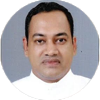
December 23, 2017 |
Subject : Syriac Hymns from Raza Qurbana Dear loving Palackal Acha, Wish you a warm greetings of Christmas and New Year. Hope you are fine. I watched Achan's interview with BinuDeepa , with great joy and happiness. It is really wonderful! Super! Highly informative and vibrant . Worth witnessing and deeply convincing. Inspiring and thought provoking. Simple and attractive. I believe that it is just "God's Plan and His Intervention". Acha it is very interesting to say that your special talent, or I would rather say "a gift of observation" and a very natural way of asking an apt questions to the right person, as you did in all the previous interviews, played a very important role here also. Yes, altogether it is really fascinating and fantastic! May Good God make your efforts fruitful, fulfilling your dreams and visions, in and through the future generations. I talked with Sajiachan yesterday. He is also very happy about it. I'm planning to visit him during Christmas holidays. (I would like to say a humble suggestion acha. If possible, it would be better if you could add the KNDISHA CD cover also to it, anywhere in the interview-the one I gave you when we met in Germany. It contains all the Hymns of Syiac Rasa Qurban fully and completely. The Malayalam transcript also is inserted. I think, it can be added, for example, as an additional contextual information, when they speak of the Sunday school competitions. And the CD is available in Sandesa Nilayam office, Changanacherry.) I am fine here. Besides the regular classes in the university I learn piano and a Stimmbildungkurs' (voice training course) which helps a singer to produce voice scientifically, and sing using the staff notation. And also I am trying to notate the Hymns and Chants of the Syriac Qurbana with the help of a great musician here. As you know it is not an easy task. Time consuming and difficult, but not discouraging. As a matter of fact- 'miles to go before I sleep'! I do pray, may Good God bless us all. Wish you once more the peace and joy of Christmas to all your family members also.
lovingly Fr. Pathil |
| Related resource(s)
|
||
| 006-0028 |
August 4, 2017 |
Subject: - Contact Us Message Reply-To - Christianmusicologicalsocietyofindia Name-: Joseph Johney Country- India How did you find us?- Web search Message: Hi CMSIndia, I am proud of your efforts in reviving our traditions and culture. I have been following your youtube channel for while and I am very glad to see the variety of our traditions being portrayed well there.It was like digging out my own soul from your channels as I am very much attached to these Syriac language and the hymns. This is where I thought how I can contribute to the society. However, I might not be able to contribute much financially for this project, I have decided to contribute myself for this project. Also, I would like to give one suggestion, which I observed while searching through our church's history. I have read that there were few representations/parishes in TamilNadu (Dindigul and Madurai) areas and even Cylone (current Sri Lanka) which were following our liturgy. However, there were no features found in CMSindia or our church (Syro malabar ) about these. These parishes were later taken by the Latin rites. I would like to be in touch with the society and would like to contribute to it based on the leads provided from your side.
Thanks and Regards, Joseph Johney |
| 006-0027 | 
July 25, 2017 |
Subject: - Q& A in Rome Dear Joseph Acha, Just completed watching the Q&A session in Rome. It was a great experience for me to learn on the golden treasures of our tradition. Thank you so much for your hard work and dedication. Praying for success in all your endeavors and may God reveal more hidden truths to you. Acha, I am also drawn to the explore more on the Sacred Art. In the beginning of the session, you alluded to the writings of Prof. George Menancheri and his works about the Christian Art in Kerala. I would like to learn more on our artistic tradition of early Christians. Could you please provide me some more guidance and insights on this area? I have added some of my works here: www.gintoart.com.Thank again for your outstanding efforts, Ginto Pottackal |
| Related resource (s)
|
||
| 006-0026 | 
July 11, 2017 |
Subject: - Dear Loving Palackalacha you are a “Chosen one by God’’ Greetings from Salzburg. I am fr. Joseph Pathil. We have talked once in SEERI during a Syriac conference.How are you dear Acha? Hope you are keeping well. First of all may I congratulate you very sincerely for the valuable contributions you have given to our Church through “the Aramaic Project’’. How committed and dedicated you are! You are doing a wonderful work. The continuing endeavor to preserve the remaining relics of Syriac musical tradition in our land is really appreciable. If you had not made such an attempt, then of course, no doubt, we would have lost it forever. I really enjoyed most of the interviews very well. It is really a great source of information for the future s research scholars. And I was really amazed to find that no one made an attempt before, to preserve this TREASURE, except one from abroad who do not belong to this Tradition at all. So it is definite that you are a “Chosen one by God’’ for this special mission. These words I write from the very bottom of my heart.
|
| 006-0025 | 
April 15, 2017 |
Subject - Finding Jesus: Faith, Facts & Forgery Dr. Joseph J. Palackal appears on CNN on 2017 Sunday, 9th April, 9 PM. Dear Palackal Achan, Happy Easter! My sincere congratulations on your great accomplishment. I felt so proud to watch and share your CNN - Finding Jesus documentary. I have invited a few of my parishioners and few other friends to watch it and they all enjoyed it. Fr. Ampat and Fr. Sebastian Kallarackal shared their joy and salute to you on your dedication and persistence into this project. As always you are my inspiration. Thank you for all that you do. Some of them asked me about the possibility of downloading the video and showing it at the church. I tried but I could not find it in CNN site. How is your health? Hope you feel better. You are in my thoughts and prayers. I really like the new design of our website. Excellent work. Love and prayers, Lijo Fr. Lijo Thomas CMI, |
| 006-0024 | 
April 12, 2017 |
Subject - Finding Jesus: Faith, Facts & Forgery Dr. Joseph J. Palackal appears on CNN on 2017 Sunday, 9th April, 9 PM. Dear and Rev Father Joseph. I watched the CNN program with your commentary, it was very gratifying to see a prominent news source CNN featured Kerala Catholics and acknowledge the historical fact that St.Thomas came to India. Thank you hope we can see many such contributions towards our heritage from you |
| 006-0023 | 
April 12, 2017 |
Subject - Finding Jesus: Faith, Facts & Forgery Dr. Joseph J. Palackal appears on CNN on 2017 Sunday, 9th April, 9 PM. Your presentation on CNN was excellent. It was a proud moment for all of us.I expected you to sing in Aramaic too.Hope to see you again on the world 's biggest and favourite TV platform CNN. Congratulations on your amazing performance. Anie Thaila |
| 006-0022 |
April 5, 2017 |
Subject:- Re:Our story on CNN
Dear Father, Thank you very much for your efforts to uphold our mother Church and our traditions in the International level. No one has ever done such an effort. After Placid Joseph Podipara CMI, it is Palackal Joseph CMI who is taking our Church to the next level. I don't have any special instructions. I just wanted to say that I have been following your work for the past two years and I really appreciate your work and I have learned a lot! In terms of music, liturgy, church history, Kerala culture. Thanks!
Dr. Martin Thomas Antony, |
| 006-0021 | 
April 5, 2017 |
Subject - About thecmsindia.org and youtube videos Dear Father Palackal, I first want to apologize for my delayed response. I was surprised but very glad that my note was able to have that impact on you and your team! I would have never imagined. Your very personal reply to my message was a pleasant surprise for me too. Thank you for sending it. I could have elaborated a bit more on my note if not for the character limit but my note captures my general feelings. I have always been interested in learning more about Kerala and church history, but I stumbled upon your website and youtube videos after staying one summer in Kerala a couple years ago. I also took a class in college later that year about music in India and got a chance to read a couple of your articles. I do not mind if you post my note onto the homepage. I have attached a photo to the email. Also, I was wondering if I could share your email address with a very close friend of mine who is also familiar with your work, and I am sure he would love to connect with you. He is currently studying Syriac at SEERI in their masters degree program. He also recently took up voice lessons with a Jacobite priest there. He was telling me a couple weeks ago that he has started to learn to sing the Nicene Creed in Syriac. He has several interests related to Syriac, but some that he has mentioned to me include helping make the Syriac language and grammar more approachable and compiling Syriac music texts with their transliterations, and ultimately making it easier to re-incorporate Syriac into liturgical and daily practice. I know that his interests have significant overlap with your Aramaic Project which is why I think it would be great if he was able to connect with you. Please let me know if that is okay. Best, |
| 006-0020 | 
April 5, 2017 |
Father, nobody thinks in the terms you are thinking about these things. Nobody pays attention to these things in the historic perspective, in the growth of events , growth of institutions in the church and are. So it requires people like you to bring these things up. Otherwise we will just keep floating. |
| 006-0019 | 
Mar. George Cardinal Alancherry April 5, 2017 |
Subject - Syriac Chants I will request you one thing that you propose certain Hymns in Syriac like Puqdana kon’ , Thesbotha Alaha , Lagumara, Khandisha Alaha and some text words that could be introduced during the celebrations in Malayalam or any other language. Please create a recording of these chants and i can propagate. |
| Related resource (s)
|
||
| 006-0018 | 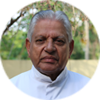
Rev. Fr. Sebastian Sangoorikkal April 5, 2017 |
(Thank you so much for extracting the knowledge of Syriac language which is melted into my blood....) Only people like you, not many, not many at all, should take these things out of me. Otherwise I can’t express these Syriac chants are in my blood. |
| 006-0017 | 
April 5, 2017 |
I really appreciate the effort you are making for the promotion of Syriac language. Thank you Fr. Joseph Palackal for planning this program and interview. There are not many priest who has doctorate in Music and we may not have someone like you with the talent, knowledge and passion in the Syro Malabar Church, in the CMI congregation or in the whole world. I am happy and proud of associating with you. |
| 006-0016 | 
April 5, 2017 |
Mr. Sebastian Menachery I thoroughly enjoyed listening to your presentations. Very Well done. I am sure God’s blessings will be in abundance with you for your project |
| 006-0015 | 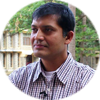
April 5, 2017 |
I look forward to another opportunity for interacting and meeting with you. Thank you father, it was wonderful listening to you, this morning. My tradition is Syriac tradition and reviving that is reviving and finding my roots. Primarily, if we can provide the meaning of the Syriac chants and prayers, that can be included in the daily prayers.Wonderful Father, and all the best and I look forward to another opportunity for interacting and meeting with you. |
| 006-0014 |
Paul Varkey Parayil December 29, 2015
|
Subject: Reply- donation inquiry Dear Fr. Joseph,
|
| Related resource
|
||
| 006-0013 |
Tobin Thomas November 9, 2015
|
Subject: - Thank You Dear Palackal Acha, I am a Knanaya Catholic living in Houston, Texas. I just wanted to say thank you very much for your Aramaic project and all that you do to preserve and protect our Syro Malabar musical heritage. I am a History Education major (I will be a teacher in one years time) and I absolutely love both history and the humanities. With this in mind, I fell in love with the musical heritage of the Syro Malabar Church and our Syriac Roots. At first I was only researching the history of our Church and the Knanaya Community but later the Syriac roots of the Church and our liturgical music truly astounded me. I have watched many of your videos on Youtube and they have really given me so much knowledge that I did not have before. Perhaps one of my favorite hymns is the Knanaya Wedding Chant Bar Mariam and I was wondering if you could send me a Syriac to English side by side translation. Also I was wondering if you could share some knowledge with me on the old Knanaya Purathana songs, I have always wondered the deep meaning and origins of these old wedding songs that we sing. Once again Palackal Acha, you are truly a gift to the Syro Malabar Church and I really hope you continue your mission. Best Wishes Tobin Thomas |
| Related resource
|
||
| 006-0012 |
Martin Thomas Antony November 1, 2015
|
Subject -In response to the video : Aramaic Project-52 Dear Father,
|
| Related resource
|
||
| 006-0011 |
Sherring Thekekkara October 20, 2015 |
Subject: - Appreciation and thanks from a member of Malankara Orthodox Syrian Church Dear Dr. Palackal,I chanced upon the Aramaic project a few weeks ago and since then would have listened to most of the renderings . God Bless you for taking this noble mission on and preserving these musical gems and heavenly language for our next generation. My church and yours carry the same apostolic and unbroken faith rooted in tradition, we are but the same people separated more by twists of history rather than doctrines and dogmas. Hope your efforts will inspire some of our elders to revive the West Syriac rites too in a systematic way on the web. Just a small gift for you to listen when you have time Video Best regards Sherring Thekekkara Dubai PS: It will be a pleasure to host you if you pass by Dubai, please let me know |
| 006-0010 |
Johny P David October 16, 2015
|
Subject - In response to the video : Aramaic Project-50A Excellent It is so touching. The sanctity of Aramaic and the beautiful translation into Malayalam both achived its intended purpose. Sincere appreciation to Rev Dr George |
| Related resource
|
||
| 006-0009 |
Varghese Pathikulangara October 10, 2015
|
Subject - In response to the video : Aramaic Project - Part 44;
Prayerful greetings! Priy Joseph Acha, Varghese Pathikulangara CMI |
Related resource (s)
 Aramaic Project-Part 44. Rev Dr Varghese Pathikulangara, CMI in conversation with Dr Joseph Palackal Aramaic Project-Part 44. Rev Dr Varghese Pathikulangara, CMI in conversation with Dr Joseph Palackal |
||
| 006-0008 |
Martin Thomas Antony August 2015 |
Subject - In response to the video : Aramaic Project - Part 26 It is wonderful to watch these young children singing syriac chants.Very glad to know that their master, Mr Baby Anamthuruthil is handing over what he experienced in his childhood to the young generation. I hope these children also keep this tradition alive and active. These children are really the hope of our community. I think the Lord is working through Mr Baby and these children to make changes in the way of our worship by using the sacred language of or Lord. The Holy Spirit is now really working and influencing the church through these ordinary children (Lucky children) and their master. God bless them. |
| Related resource (s)
|
||
| 006-0007 |
Amel Antony July 13, 2015 |
Subject:-- Compliments about Aramaic Project Dear Rev Palackal Ouseph Kathanar, Greetings from Kochi! Hearty congrats for taking up this Aramaic project !!. It was an eye opener and thanks to your efforts it rekindled my interest in Suriyani. I stand in awe at the stupendous achievements of Rev, Emmanuel Thelly , Rev Thomas Arayathanal & Guru Yohend. Listening to Rev. Koonamackal on Youtube, the next thing to do was to meet him . Dropping in at his Dayara and interacting with him on our history and suriyani heritage was indeed remarkable. Its a matter of joy and pride that Rev Kallarangatt can offer Qurbana in Suriyani. As I would see it , yo've preserved our heritage for posterity and I'm sure that future generations would refer to you as a zealous missionary who breathed vigour & vitality into the ailing body of Eastern Suriyani. Has the CD of Suriyani Qurbana been released? Would like to purchase one . Love, regards & prayers, Dr. Amel Antony |
| Related resource (s)
|
||
| 006-0006 |
Joju Jacob July 9, 2015 |
Subject:- On Syriac and B'eda d'yawmaan Dear Fr. Palachal, |
| Related resource (s)
|
||
| 006-0005 |
Isaac Chackalaparampil July 19,2015 |
Subject- About Syriac Songs പ്രിയ പാലക്കലച്ചാ, ഐസക്കച്ചൻ |
| Related resource (s)
|
||
| 006-0004 |
Yawsep Mathai July, 2015 |
Subject - In response to the video : Project - Part 19 syro malabar sabhayukkuu nashtapettu kondirikkunnaa suriyani bhashyayum aradhanakramavum veendum orrkan oru avsaram tharunna dhanuu Malpan Joseph Achan arambhichaa aramic project... achaa, ee project nannayii munnotuu pokan ee eliyavan ennum prarthikkunnunduu... Malpan George Koyilparambil oru nallaa suriyani pandidhanuuu... adhum ernakulam angmaly roopadhayil suriyani ariyavunnnaa achan marundu ennuu parayumbol adhu syro malabar sabhaykku pradeeesha nalkunnnadhannuu... syro malabar ennaa peeril SYRO ennaal syriac anennuu polum ariyatha sabhamakkallee ee projectinnuu unarthan sadhikkatee..
|
| Related resource
|
||
| 006-0003 |
Johny Mathew March 2015
|
Subject - In response to the video : Aramaic Project - Part 18 Father, I really appreciate your hard work to get back our Syriac heritage in the community and all the best to you father |
| Related resource
|
||
| 006-0002 |
Ajay Mathew Jose January 2015 |
Subject - In response to the video : Aramaic Project - Part 15 It would be great if some Aramaic chants and prayers were incorporated into the Syro-Malabar missal. It takes you back to your roots. Listening to songs like 'Qaddisha' evokes in me, a fragment of memory that must have passed on to me through my genes which makes it quite familiar even though I have no knowledge of the language. |
| Related resource
|
||
| 006-0001 |
Saju Chackalackal, President, DVK July 21, 2014 |
Subject - Denha Endowment Lectures given by Dr. Joseph J .Palackal Dear Father, Thanking you once again, and wishing you all the best and God's abundant blessings, Saju |
Copyright
Copyright: Christian Musicological Society of India. Do not use any part of this article without prior written permission from the Christian Musicological Society of India. For permission please send request to info@thecmsindia.org






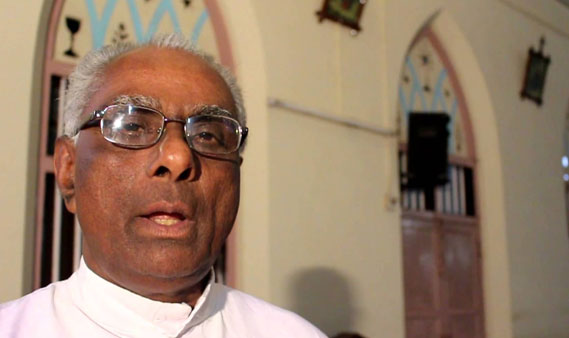
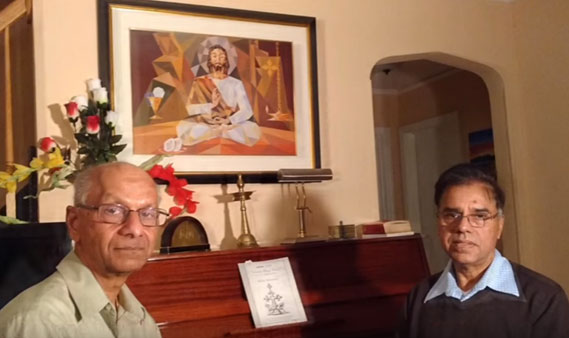 George Thaila sings a Malayalam lyric to the tune of Bar Mariam
George Thaila sings a Malayalam lyric to the tune of Bar Mariam 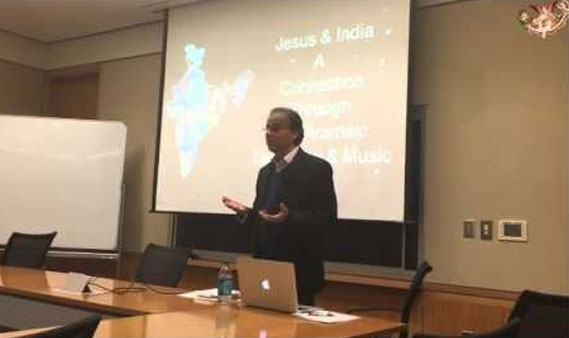

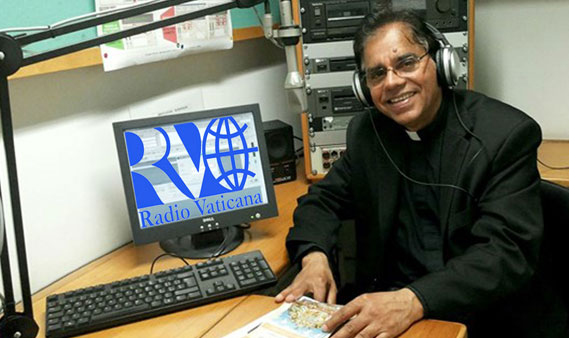







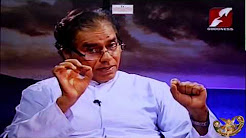
 St, Mary's Forane Church Thazhathupally, Kaduthuruthy
St, Mary's Forane Church Thazhathupally, Kaduthuruthy  Syriac script on the altar - St. Mary's Forane Church Thazhathupally, Kaduthuruthy
Syriac script on the altar - St. Mary's Forane Church Thazhathupally, Kaduthuruthy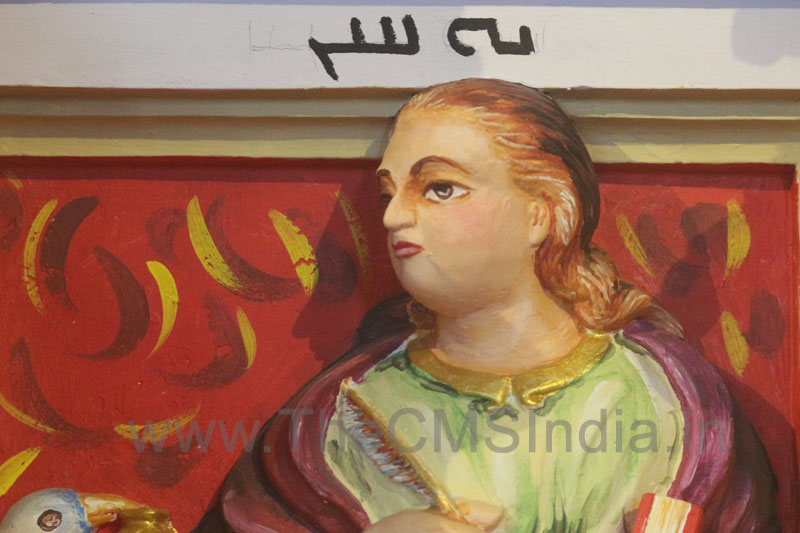 Syriac script on the altar - St. Mary's Forane Church Thazhathupally, Kaduthuruthy
Syriac script on the altar - St. Mary's Forane Church Thazhathupally, Kaduthuruthy Syriac script on the altar - St. Mary's Forane Church Thazhathupally, Kaduthuruthy
Syriac script on the altar - St. Mary's Forane Church Thazhathupally, Kaduthuruthy Syriac script on the altar - St. Mary's Forane Church Thazhathupally, Kaduthuruthy
Syriac script on the altar - St. Mary's Forane Church Thazhathupally, Kaduthuruthy Syriac script on the altar - St. Mary's Forane Church Thazhathupally, Kaduthuruthy
Syriac script on the altar - St. Mary's Forane Church Thazhathupally, Kaduthuruthy Syriac script on the altar - St. Mary's Forane Church Thazhathupally, Kaduthuruthy
Syriac script on the altar - St. Mary's Forane Church Thazhathupally, Kaduthuruthy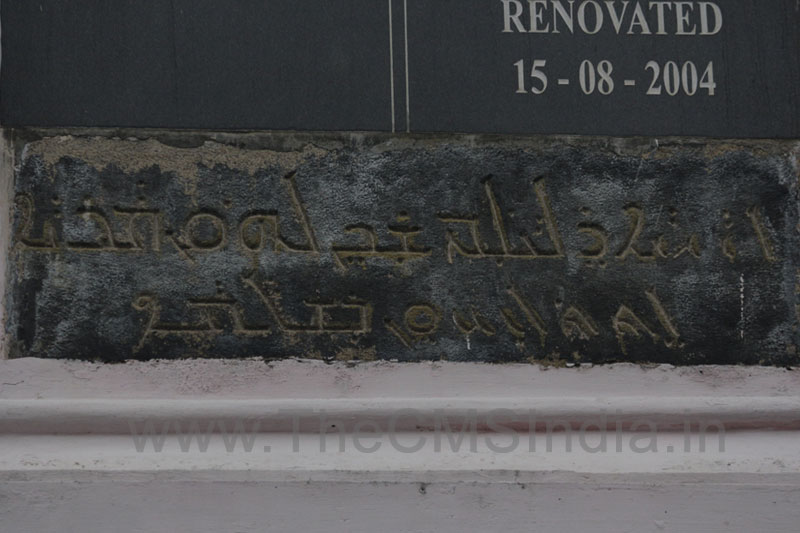 Stone Engraving showing Syriac script - St. Dominic Cemetry Chapel, Kaduthuruthy
Stone Engraving showing Syriac script - St. Dominic Cemetry Chapel, Kaduthuruthy Fr. Joseph Palackal - Celebrant at Bilingual (English and Syriac) Qurbana at St. George Church, Paterson, New Jersey, USA. 15 May 2019
Fr. Joseph Palackal - Celebrant at Bilingual (English and Syriac) Qurbana at St. George Church, Paterson, New Jersey, USA. 15 May 2019 Interview with Mar George Cardinal Alencherry -Major Archbishop of the Syro-Malabar Church
Interview with Mar George Cardinal Alencherry -Major Archbishop of the Syro-Malabar Church 
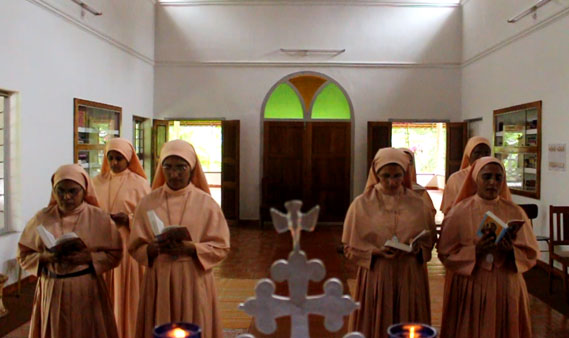
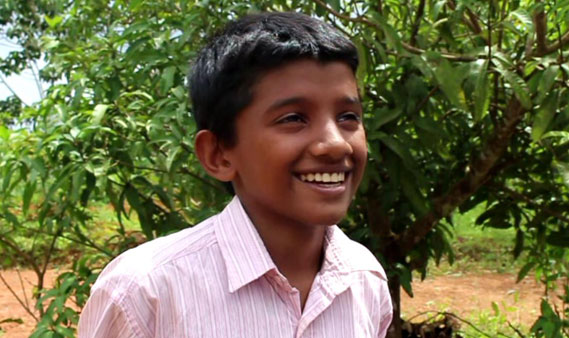



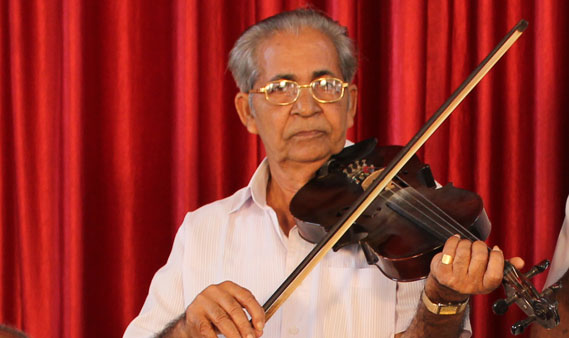




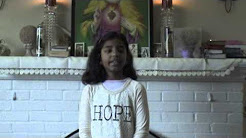
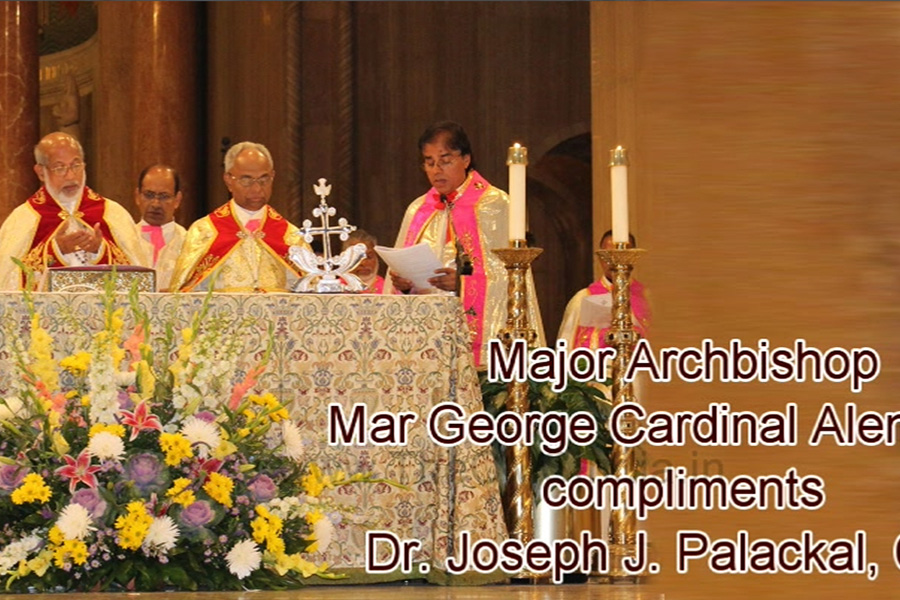
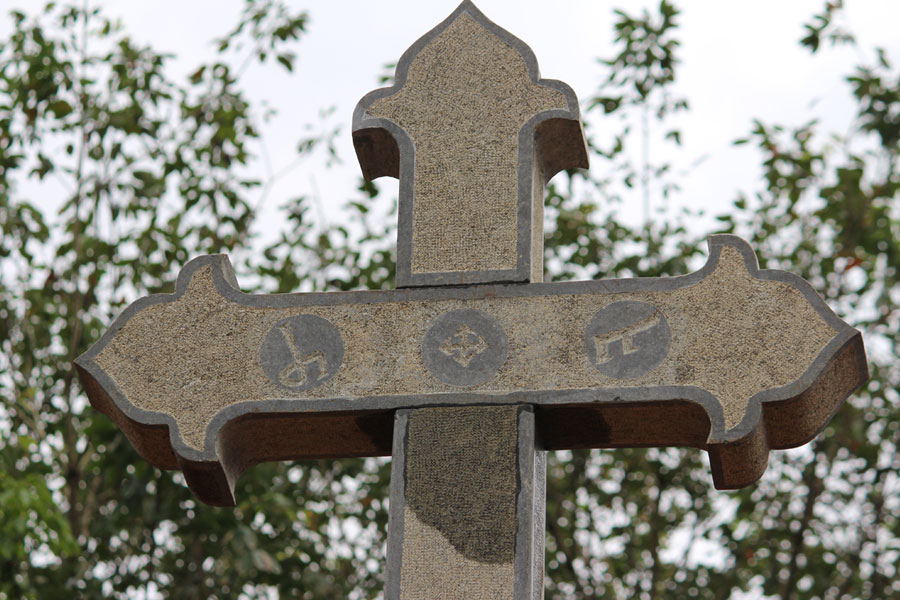



 Dr. Joseph J. Palackal's lecture at Syro Malabar Convention 2019 about the role of music in litury
Dr. Joseph J. Palackal's lecture at Syro Malabar Convention 2019 about the role of music in litury Fr. Cyril Thayyil: A Promise to the future of Syriac chants in India
Fr. Cyril Thayyil: A Promise to the future of Syriac chants in India  Marriage of Ribin Jose and Reshma: Reclaiming an old custom
Marriage of Ribin Jose and Reshma: Reclaiming an old custom  Sophia Chirayil: sings Syriac chant during personal prayer
Sophia Chirayil: sings Syriac chant during personal prayer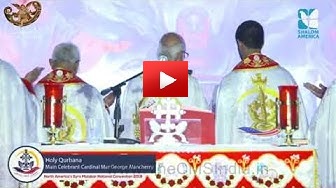 Qandisa alaha during bilingual Qurbana at Syro Malabar Convention in Houston
Qandisa alaha during bilingual Qurbana at Syro Malabar Convention in Houston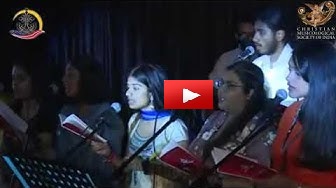 Dr. Joseph J.Palackal, CMI introduces Syriac chants at his native parish.
Dr. Joseph J.Palackal, CMI introduces Syriac chants at his native parish.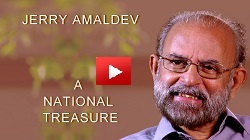 CMSI-213 - JERRY AMALDEV: A NATIONAL TREASURE
CMSI-213 - JERRY AMALDEV: A NATIONAL TREASURE 

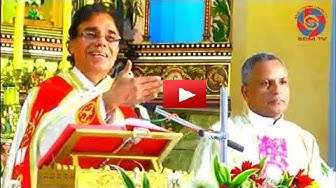 Aramaic Project 118 - Dr. Joseph J.Palackal, CMI introduces Syriac chants at his native parish.
Aramaic Project 118 - Dr. Joseph J.Palackal, CMI introduces Syriac chants at his native parish.  Aramaic Project 42 - Josetta Jarly teaches the Syriac chant "We hu nehade" from Raza
Aramaic Project 42 - Josetta Jarly teaches the Syriac chant "We hu nehade" from Raza  Aramaic Project 51L - Slīwā dahwā lan Sung When The Festival Procession Reaches The Open air Cross.,
Aramaic Project 51L - Slīwā dahwā lan Sung When The Festival Procession Reaches The Open air Cross.,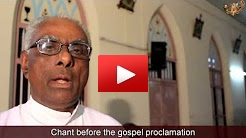 Aramaic Project 54B - Fr. Jose P. Kottaram sings the requiem melody of “Slīwâ dahwâ lan” from Raza for the dead. this chant is sung while kissing of the Cross. Category: Ōnītâ d’kanke. Video
Aramaic Project 54B - Fr. Jose P. Kottaram sings the requiem melody of “Slīwâ dahwâ lan” from Raza for the dead. this chant is sung while kissing of the Cross. Category: Ōnītâ d’kanke. Video  Aramaic Project 62K - Melody Of “wehu Nehde” While Kissing The Cross, During Raza
Aramaic Project 62K - Melody Of “wehu Nehde” While Kissing The Cross, During Raza
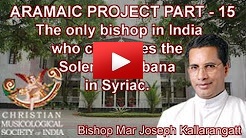





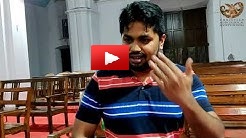







 Joseph Thekkedath Puthenkudy (Rocky) in conversion with Dr. Joseph J. Palackal
Joseph Thekkedath Puthenkudy (Rocky) in conversion with Dr. Joseph J. Palackal Aramaic Project 100 - A Historic Event - Solemn Qurbana in Syriac Dukhrana Perunal Celebrants Rev. Fr. Varghese (Saji) Mattathil
Aramaic Project 100 - A Historic Event - Solemn Qurbana in Syriac Dukhrana Perunal Celebrants Rev. Fr. Varghese (Saji) Mattathil 

 Aramaic Project-93. Fr Issac Chackalaparampil, CMI
Aramaic Project-93. Fr Issac Chackalaparampil, CMI Aramaic Project 100-Historic Event - Solemn Qurbana in Syriac -
Aramaic Project 100-Historic Event - Solemn Qurbana in Syriac - 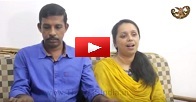 Binu and Deepa singing Syriac chants
Binu and Deepa singing Syriac chants  Fr. Saji Mattathil sings Walalam Almeen
Fr. Saji Mattathil sings Walalam Almeen  Q & A session with Dr. Joseph J. Palackal, CMI, on Christian Musicology. Rome
Q & A session with Dr. Joseph J. Palackal, CMI, on Christian Musicology. Rome 
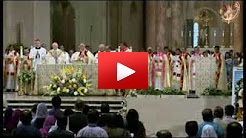 Dr. Joseph Palackal leads Trisagion in Syriac at the National Shrine, WDC, USA
Dr. Joseph Palackal leads Trisagion in Syriac at the National Shrine, WDC, USA  Major Archbishop Cardinal Alencherry sings "Puqdaanako"
Major Archbishop Cardinal Alencherry sings "Puqdaanako"  Aramaic Project 52 -Sebastian Menachery in conversation with Dr. Joseph J. Palackal
Aramaic Project 52 -Sebastian Menachery in conversation with Dr. Joseph J. Palackal  Aramaic Project-Part 26. Children's Choir at Suriyanippally, Palluruthy, sings "B'eda d'yawmaan".
Aramaic Project-Part 26. Children's Choir at Suriyanippally, Palluruthy, sings "B'eda d'yawmaan". Koonammakkal Thoma Kathanar in conversation with Joseph J. Palackal
Koonammakkal Thoma Kathanar in conversation with Joseph J. Palackal Marianne Thaila sings the famous chant, "Qambel Maran"
Marianne Thaila sings the famous chant, "Qambel Maran"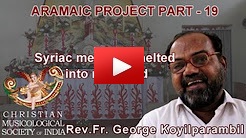 Aramaic Project- Part 19. Rev. Dr. George Koyilparambil in conversation with Dr. Joseph J. Palackal
Aramaic Project- Part 19. Rev. Dr. George Koyilparambil in conversation with Dr. Joseph J. Palackal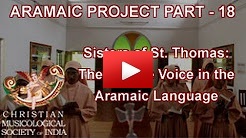 Aramaic Project - Part 18. Sisters of St. Thomas: The Female Voice in the Aramaic Language
Aramaic Project - Part 18. Sisters of St. Thomas: The Female Voice in the Aramaic Language